Walking through the old streets of Prague, you might discover that many houses you’ll pass are marked with strange symbols above their entryways. These are the famous Prague house signs. House signs were a popular method of identifying guilds, businesses, and palaces worldwide before the numbering system of city planning was implemented. But in most cities, these ancient markers have long since disappeared with urbanization. But in Prague, they have remained and are one of the greatest hidden treasures of the city. Searching out these famous street signs of Prague is a fun little scavenger hunt! If you’re looking for an alternative tour of the town, looking for these symbols is a great way to explore Prague.
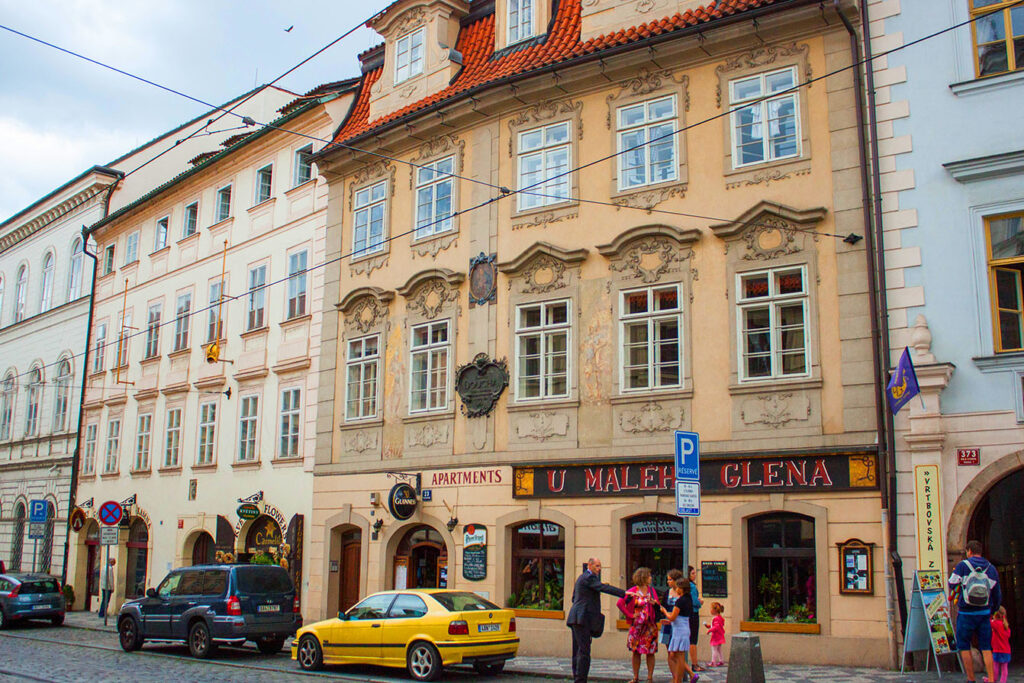
This tour will take you around some of Prague’s most famous streets and some off-the-beaten-track neighbourhoods. This is one of the most comprehensive guides to Prague’s street signs, and I have done my best to give you some hints at what the signs symbolize and where they can be found in the city! The tour has two parts: the Old Town and Malá Strana (or the Lesser Quarter). Let’s start with our guide to Prague’s Mala Strana House Signs.
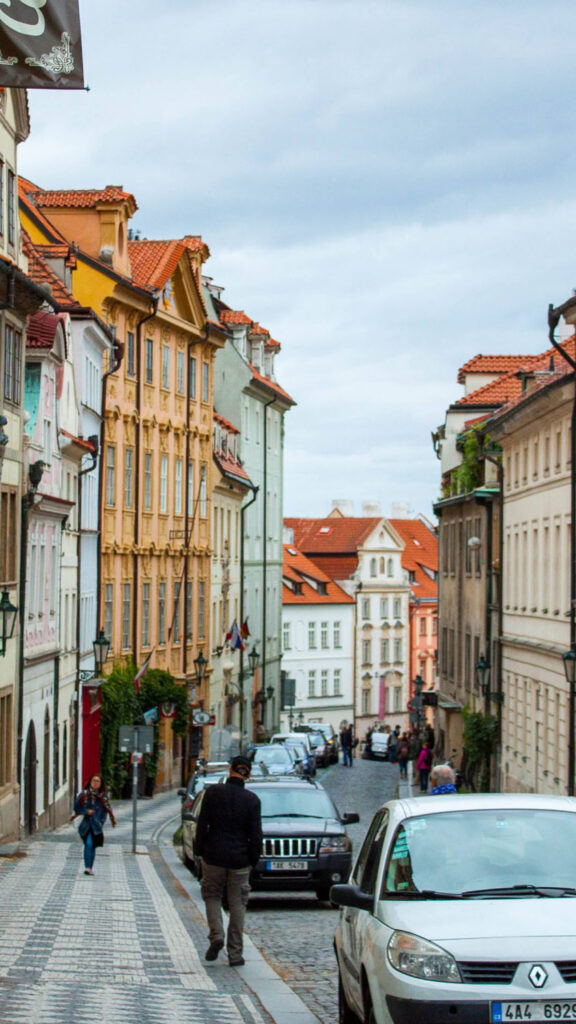
Map of the Malá Strana Lesser Town House Signs Tour
History
Identifying houses with symbol signage is an antiquated practice that dates back to ancient Egypt. The oldest house sign, made with stone relief, was documented in Ptolemaic Egypt (Giza), dating back to the 3rd century BC. Hundreds of years ago, being able to read was a skill only the nobles or academics possessed. Since most citizens could not read, craftsmen used symbols to identify their businesses so people could find goods and services around town.
The oldest house signs in Prague date back to the early 14th century. While the first house signs were used to identify occupations, later symbols were created to distinguish the surname of the home’s owner. This system was maintained until 1770 when Bohemia finally adopted the official numbering system. It was one of the last European cities to make the change, thereby preserving so many of these signs for posterity.
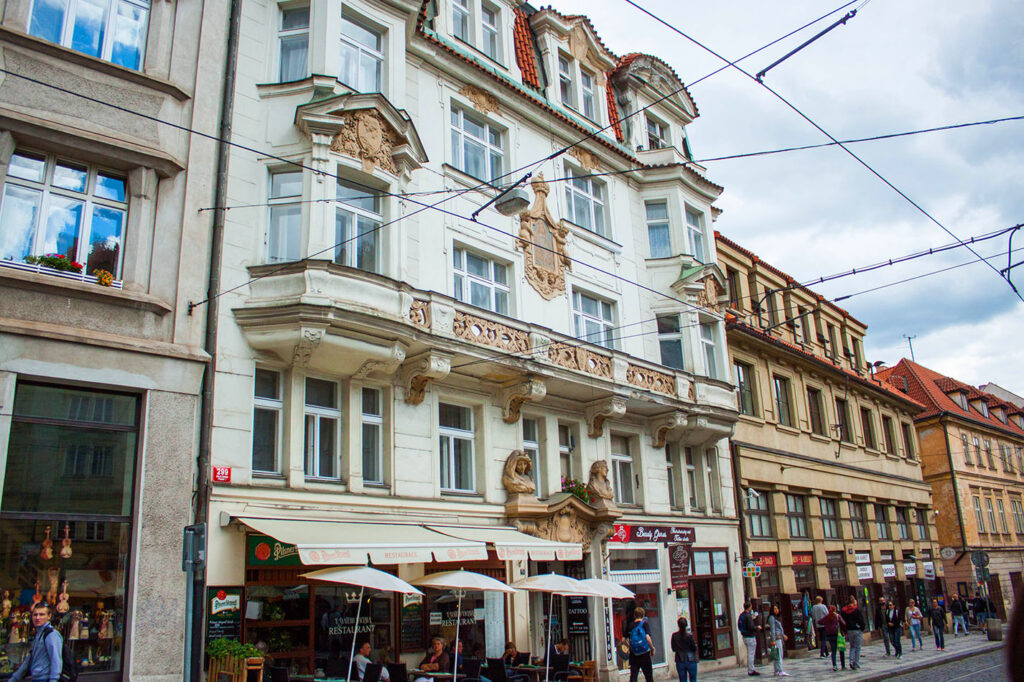
The oldest house signs were made of stone and carved with various reliefs. In the baroque age, these signs were made of stucco and plaster. Baroque designs were also painted onto plaster cartouches or tablets and placed onto the facade. Finally, in the later 18th century, the signs were made of metal or wood, more resilient against the elements. These signs were also sometimes hung off the sides of the buildings or placed on boards so that the signs could be more easily replaced should the house be sold off. Because there were only so many different symbols that could be used, sign makers would employ different coloured combinations. This would ensure people could tell the difference between establishments.
The Prague House Sign Numbering System
Prague went through two different numbering systems when the city was enumerated. You can still see both of these numbering systems identified on the front of each house. On each house, two number plates are printed; one on a red plate and the other on a blue plate. The numbers in red are called “descriptive” numbers and date back to 1770. These red numbers seem placed haphazardly as the numbers don’t proceed sequentially from house to house. This is because when the soldiers were designating house numbers, they allocated the next number in the sequence to the newest house built. They did not base the numbers on the following geographic location. So even if your house was far from the previous house on the street, you’d receive the next number in the sequence.
The blue numbers, however, are instead based on geographic orientation. These were installed when the city was renumbered in the late 19th century. Interestingly, they kept the old red numbering system up despite its confusing nature—another quirky bit of charm which makes Prague such an interesting city.
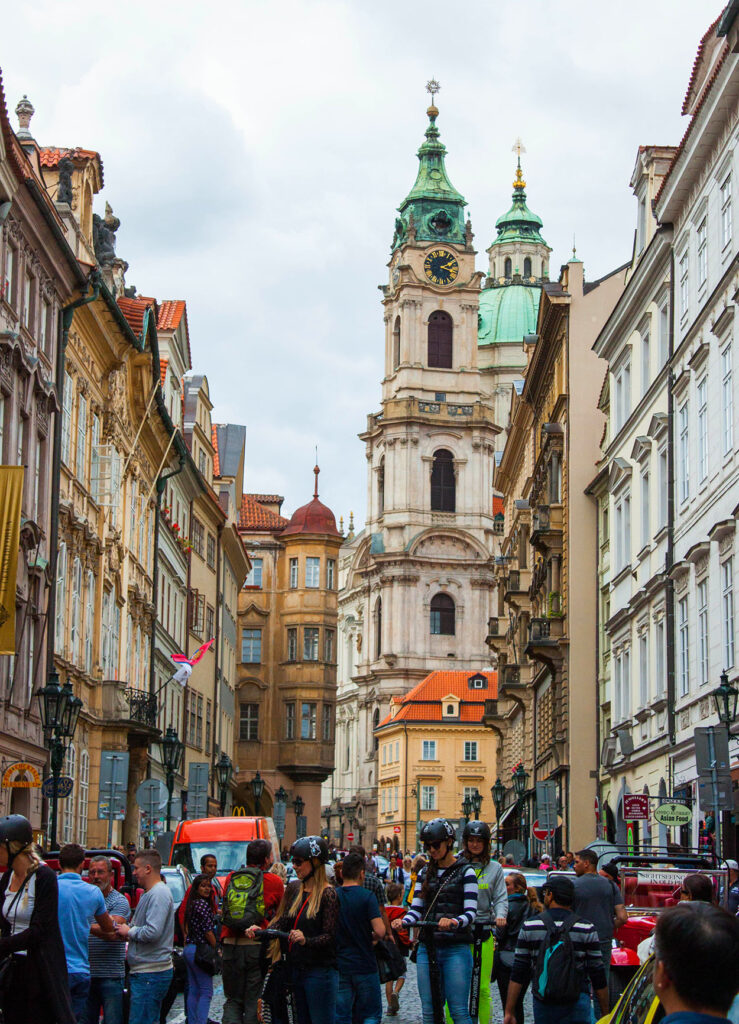
Maltézské náměsti 3/474, At the Golden Snake
A gold merchant once owned the house of the Golden Snake. Since snakes symbolize transformation, any goldsmith who could turn rock into a beautiful piece of jewellery would have been drawn to the snake’s image. And, of course, it needed to be painted in gold! The house dates back to the Middle Ages, but the current facade is from 1853, designed by František Wolf.
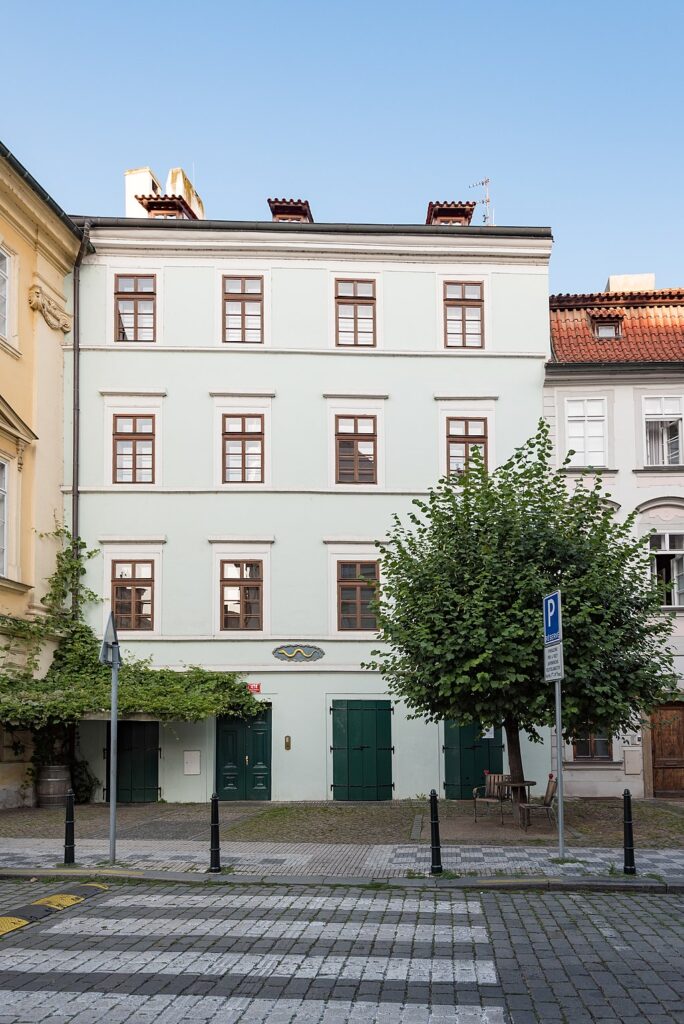
Karmelitská 379/18, House at the Golden Hands
Karmelitská Street was built in the Middle Ages behind the walls of Mala Strana, or “Lesser Town.” The name comes from the Barefoot Carmelite Order, which owned the land. The house at #18 on Karmelitská was once owned by the Thun-Hohenstein family. This noble family has a strong connection with the Masonic order. Many people say that Wolfgang Amadeus Mozart came to Prague because of their influence. The house symbol on the front of the portal to the house depicts a three-handed handshake, giving the place its name, House at the Golden Hands. A three-handed handshake is so strange that many suspect it is a secret handshake. Although I don’t know how “secret” it can be when it’s being revealed right on the front of the building.
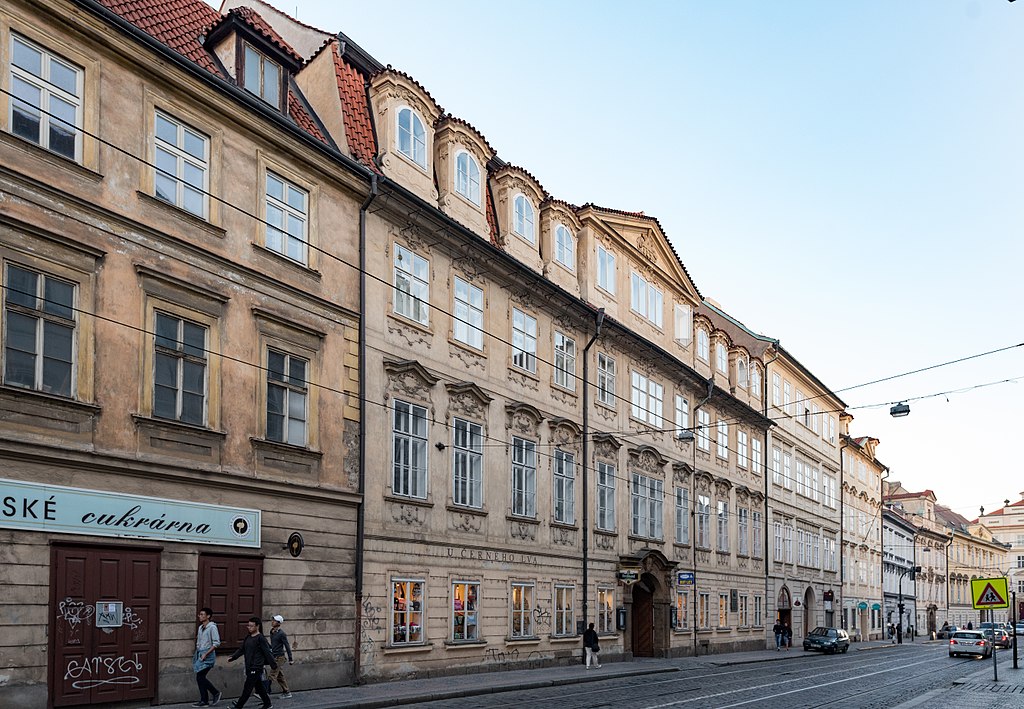
Prokopska 10, the Little Black Horse
Prokopská Street was named after the church of St. Procopius, which was founded in the 13th century along this lane. In the 18th century, the church was transformed into a residential house by architect Ignác Jan Nepomuk Palliardi. The home at #10 is known as the Little Black House, or “U černého konička,” and was built in the 16th century. Above the doorway into the home is a little rudimentarily carved horse hopping over a hillside. Horses generally represent a driving force, but black horses represent a more mysterious meaning or shadow self—a very ominous symbol for a household. Today the house serves as a lovely apartment complex.
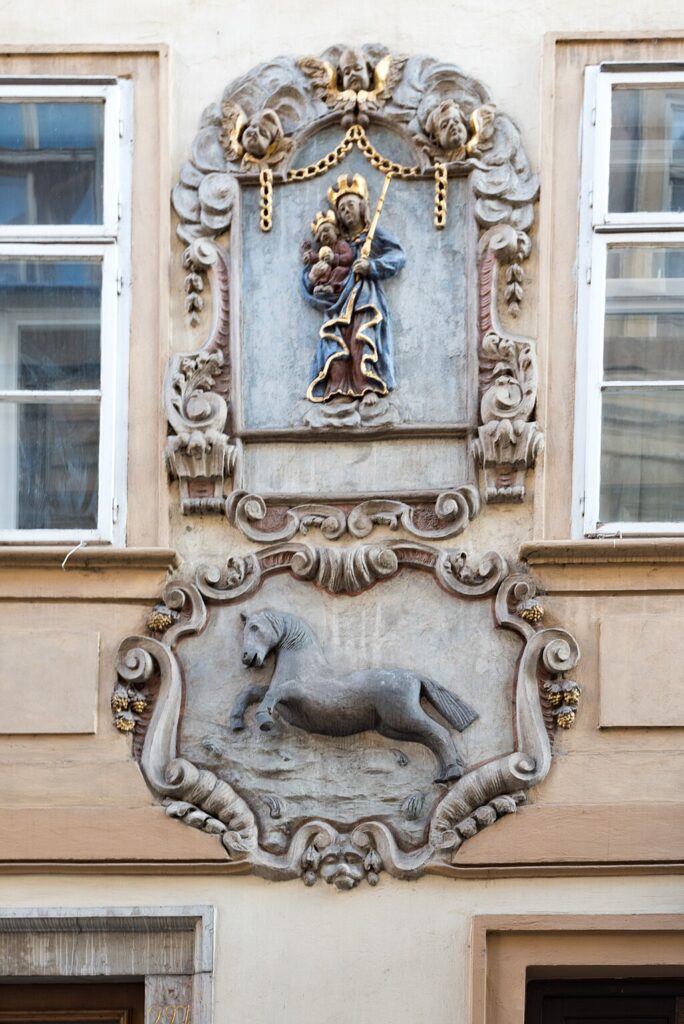
Dražického nám. 76/12, The Three Ostriches
Located right at the mouth of the Charles Bridge is U tří pštrosů or the Hotel of The Three Ostriches. The original house was built in 1597 as an old medieval public house. Despite the age of the home, the painting on the front of the facade is fantastically preserved! Jan Fux, an exotic feather trader, bought the house in the 16th century.
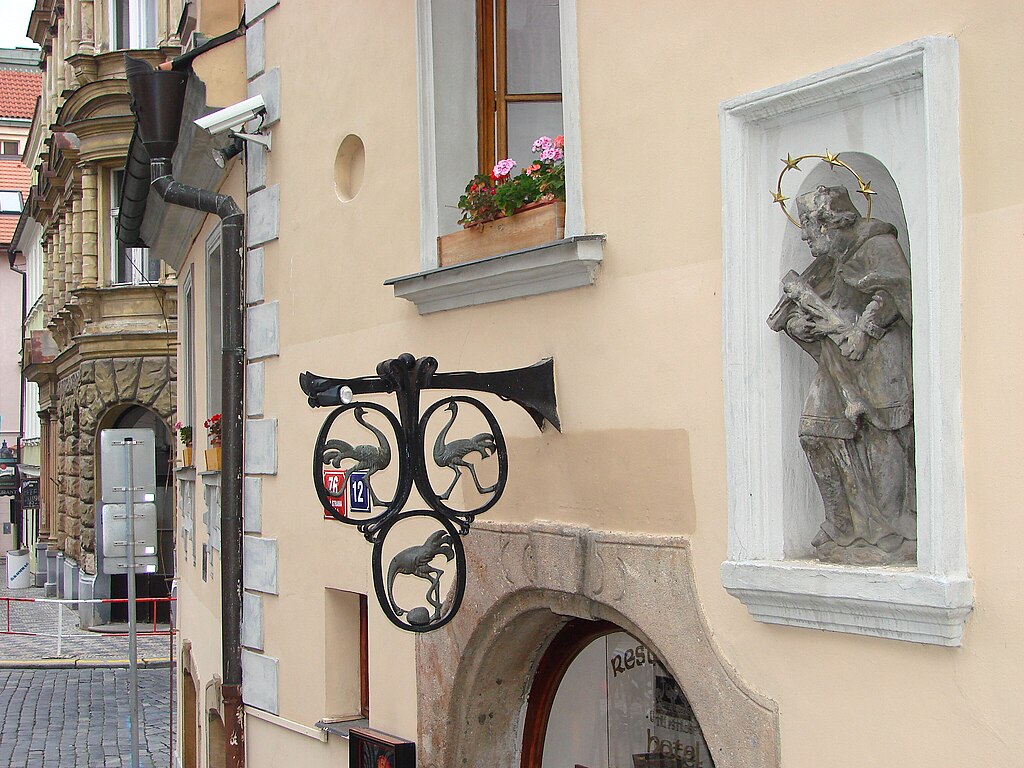
The Ostriches on the facade represent the gift that he gave to Charles IV for his coronation. In 1714 the building was purchased by Armenian entrepreneur Gorgos Hatalah who opened the city’s first coffee shop in the Three Ostriches.
Mostecká #4, The House of St. Saviour
Mostecká Street was an important part of the former Royal Route. The Royal Route was the pathway that the royal procession followed during the King’s coronation. So many houses along the road were own by prominent Czech nobles. The home at #4 was originally two smaller houses built in the gothic period. In the Renaissance, the interiors were joined together, but the exterior still retains two separate facades.
The one on the right is the House of St. Saviour. This home maintains a baroque appearance. The beautiful house on the right is painted in a gorgeous bright baby blue. Set into the portal above the door is a small niche with the statue of St. Saviour. Surrounding the niche is a frame carved into the form of the acanthus plant. The acanthus is a plant that symbolizes enduring life.
Mostecká #4, At the Bear and Chain
The house on the left is the house At the Bear and Chain. In contrast, the pale yellow building on the left maintains its simpler renaissance facade. On top of the house is a relief of a bear with a golden chain. Legend has it that a rich widow fell in love with a bear tamer, but he died before the two could be wed. The window had the bear made in honour of her lover. She added the golden chain, which represented a golden wedding ring, encircling the bear forever.
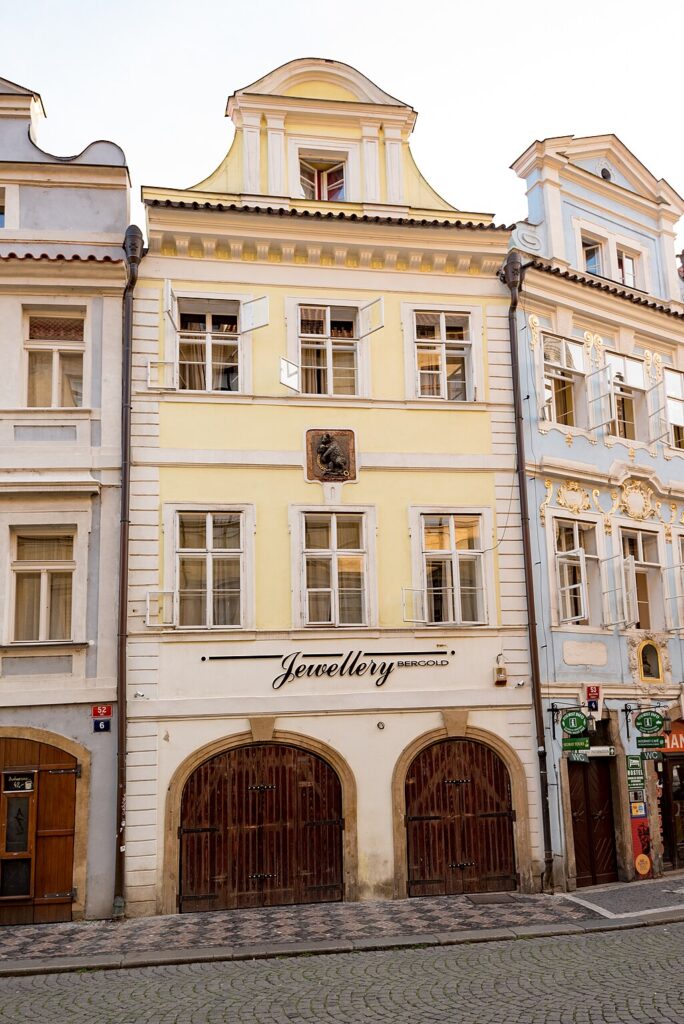
Mostecká #11, At the Black Eagle
This gorgeously decorated baroque exterior hides within a medieval house. The home was made for the court of the Archbishop of Mayence. Rich sculptural decorations and wrought grilles cover the entire facade. Above the second floor’s main windows are two great black eagles, which give the house its name, “At the Black Eagle.” Eagles are an imperial symbol. As the house was made for an archbishop, the title seems fitting.
On the very top of the exterior is a Baroque statue of St. Florian. St. Florian was an officer in the Roman army in the 3rd century but betrayed his order and freed dozens of enslaved Christians. When caught, he was flayed and drowned with a giant stone tied around his neck. He is the patron saint of firefighters, and his statue is often placed atop houses for protection against fires.

Mostecká #20, At the Three Golden Rings
This pale house with a fading classical facade displays three golden rings intertwined above the doorway. The three rings seem to form a chainlink. It is said that the symbol for the house At the Three Golden Rings was created by a loving father after these three daughters were married and left the nest. It was a way for him to keep them in his heart forever. But other people suspect that the three rings represented the mystical circle of life: birth, maturity and death. This symbol was often used by the Mother Goddess cult, and perhaps this was where their coven would meet.
Malostranské nám. 4, At the Golden Cluster
Malostranské nám. or “Lesser Town Square,” was the medieval marketplace for Lower Town citizens. Here everything from social events to executions would take place. Opposite the church, on the corner of the building at #4 is a beautiful carving poking out from the stone. It shows the large, swollen face of a man (most likely Baucaus) and below him is a large bunch of golden grapes. Giving the house the name “At the Golden Cluster.” Baucus’s image and the grapes indicate that this building was most likely used as a banquet hall and today serves as a rowdy beer hall.
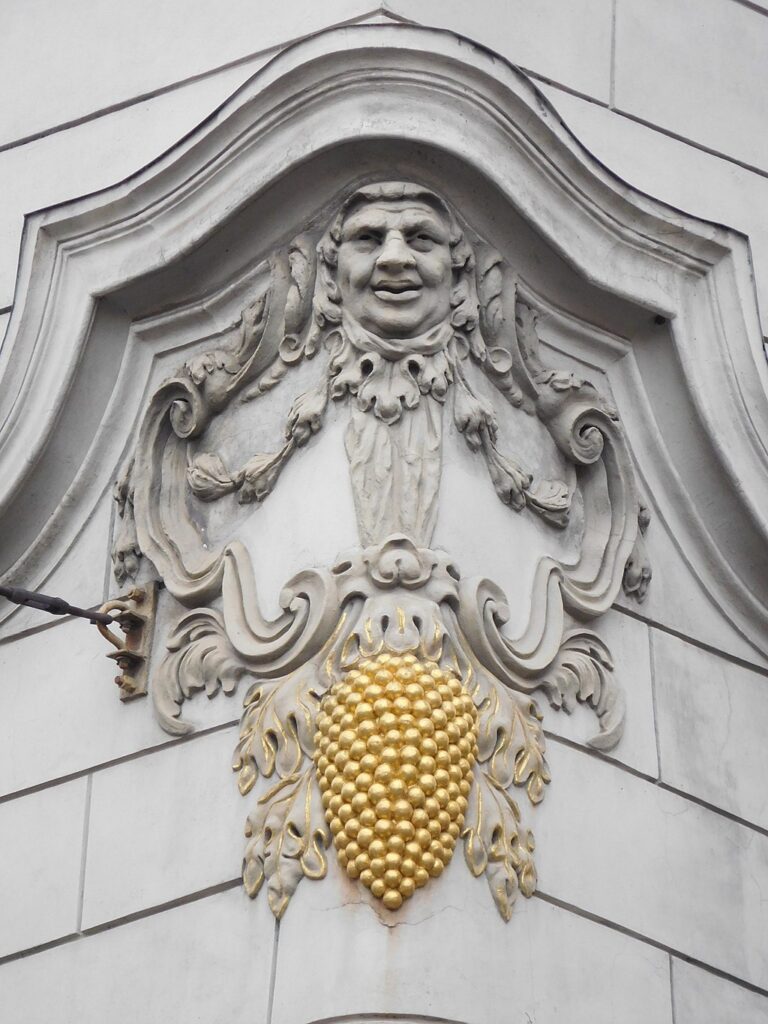
Tomášská #4, The Golden Stag
Tomášská Street was named after the Church of St. Thomas and the Augustinian monastery, founded in 1285 along this lane. At #4 we find the great house of the Golden Stag. The house was built for moneylender Jan Kašpar Friedrich in 1726. On the front of the house, we see the large sculpture of Saint Hubert. While the sculpture seems normal enough, look twice, and you’ll spot a phantom hand emerging from the belly of the stag. This, as per the story, is how Christ appeared to Saint Hubert while he was hunting in Ardeen’s forest.
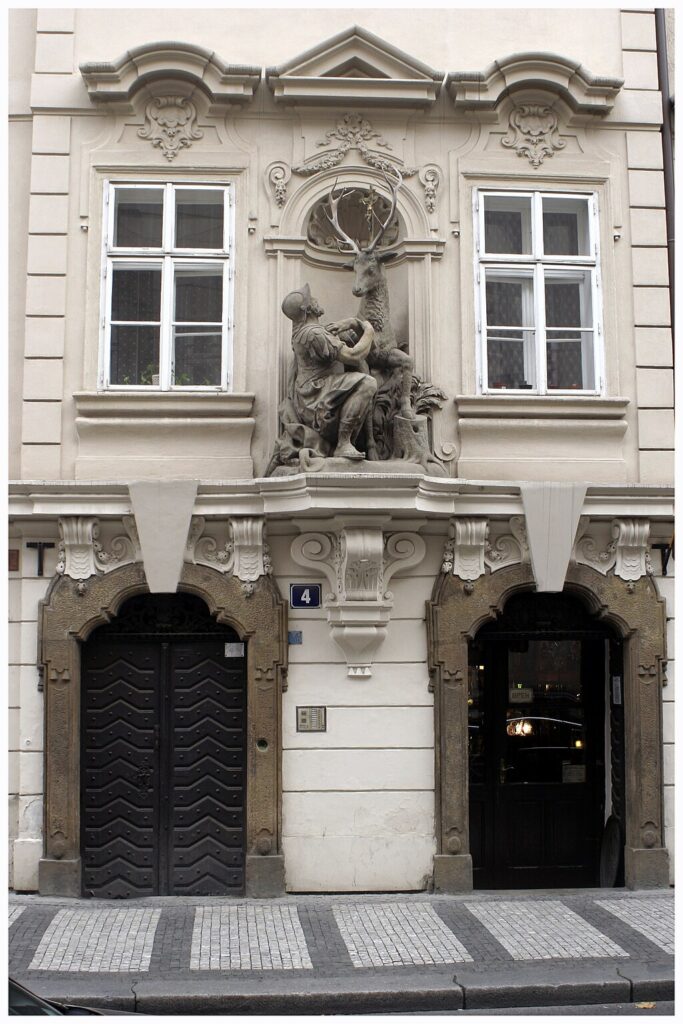
Tomášská 12, the Golden Pretzel
In the 17th century, a famous baker Kryštof Krob bought this house and installed this sign on top, which symbolizes the bakers guild, a Golden Pretzel. Pretzels have been used a symbols for bakers since medieval times. In 610, a monk-baker invented the pretzel when he was trying to come up with a reward for children who learned their prayers. He twisted the dough, so it looked like the formation of arms crossing your chest in prayer. He called it “pretiola,” Latin for “little reward.”
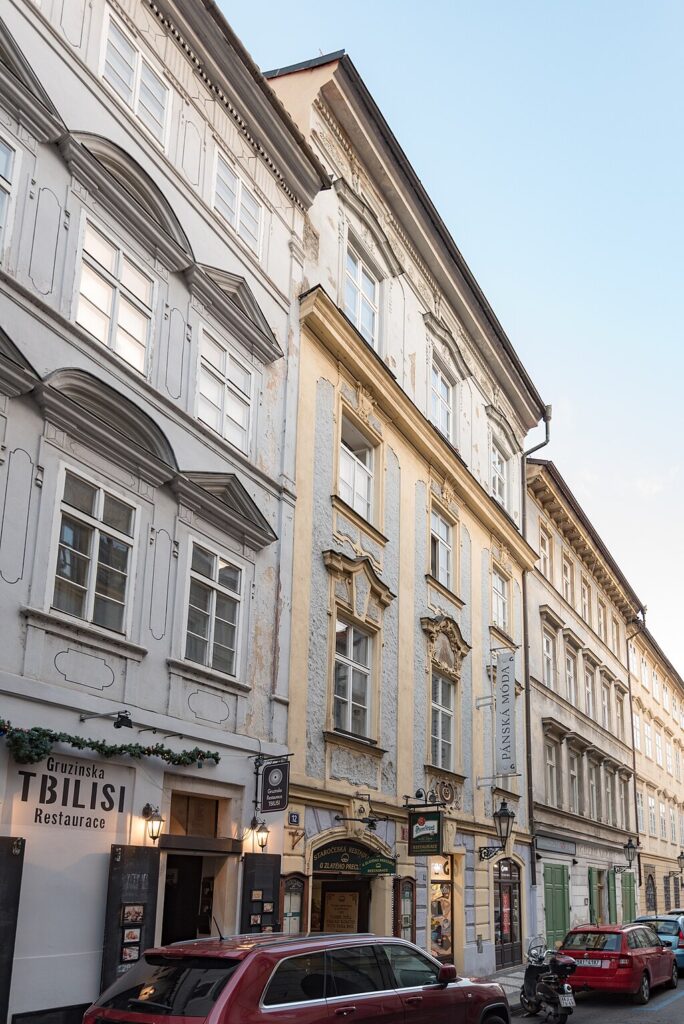
Valdštejnská Street 8, House of the Three Storks
Valdštejnská Street was named after a small settlement of Písek people who moved to Prague. In this area is where you’ll find the House of the Three Storks. The house dates back to the 14th century and still contains remains of its Renaissance interior. The storks represent carriers of good news, which was a popular symbol for hospitality. The house was mentioned in a famous poem by writer Nazım Hikmet for his lover, who sadly died. It goes, “We used to meet at the Three Storks Restaurant in Prague. Now I am standing by the road with my eyes shut: You are far from me, the length of one death. You are a distorted image in a broken mirror”.
Valdštejnské 20, the Golden Sun
Valdštejnské #20, or the House of the Golden Sun, is now the Comenius Pedagogical Museum dedicated to Czech education history. The building in which they are located is from the Renaissance, built-in 1540. One of the house owners was the guardian of the royal silverware for Rudolf II, Havel Oberšvender. Rudolf was obsessed with alchemy. As such, it is no surprise to see the symbol of the golden sun on the doorway, a famous symbol in alchemy.
Nerudova Street
Nerudova street has perhaps the largest concentration of old house signs in Prague. The street is part of the former Royal Route. Nerudova street was created during the new founding of the Lesser Town under the rule of Přemysl Otakar II. In 1267, it formed the main axis of the western and eastern roads of the Lesser Town. The street gets its name from Czech writer and poet Jan Neruda, who lived in various houses along the street during his time in Prague.
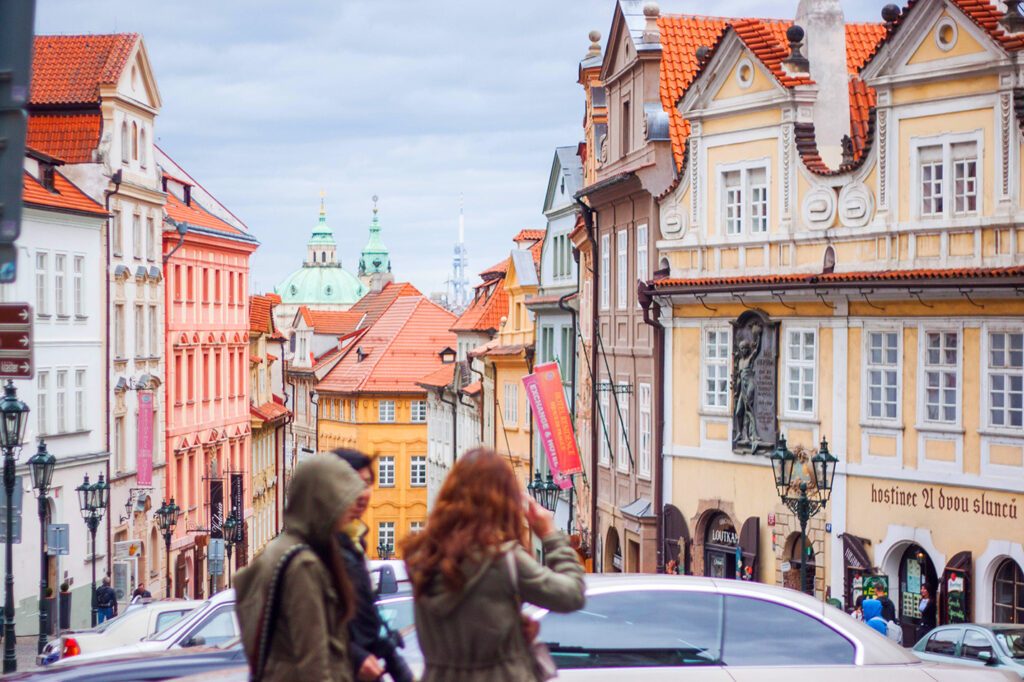
Nerudova 2, At the Black Eagle
The house At the Black Eagle is a hodgepodge of architectural styles. It was initially a gothic house with Renaissance stone portals but now bares a baroque and classical exterior. The facade contains richly painted sgraffito and stucco decorations. The giant black eagle which sits above the doorway has its wings spread wide. On his tail is a small gold caduceus symbol, which marks it as an old pharmacy. The pharmacy was located here as early as the 15th century and still serves the public as a pharmacy to this day!
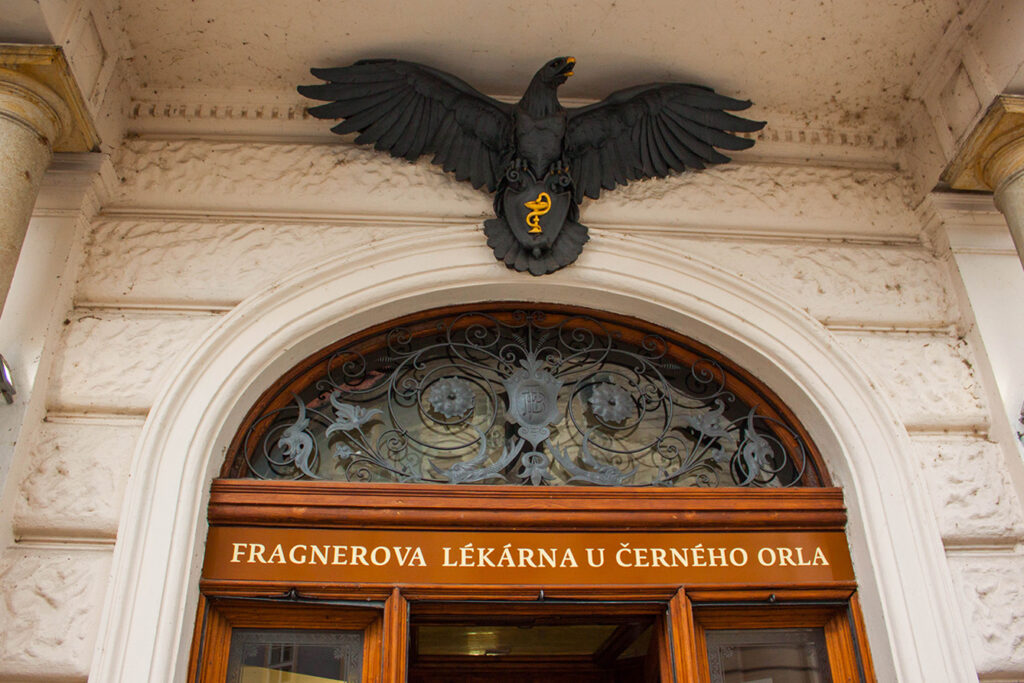
Nerudova 6, At the Red Eagle
Eagles are one of the most popular symbols along the street as only a few stops down, we find ourselves at another house which bears the symbol of an eagle. This one is red, and instead of being a carving, it is a fresco painted onto the building. The house At the Red Eagle is a gorgeous example of refined rococo designs from the 18th century. The symbol of the Red Eagle is placed in a small frame, held on either side by two beautiful angels. The eagle sits perched on a tall mound with its wings outstretched, showing off its dominance.
The eagle has been known to be a symbol of regeneration, much like the Phoenix. When these birds reach the end of their lives, they set themselves on fire and are reborn again. Rebirth was an essential part of alchemy and is thought to indicate magic taking place in this house.
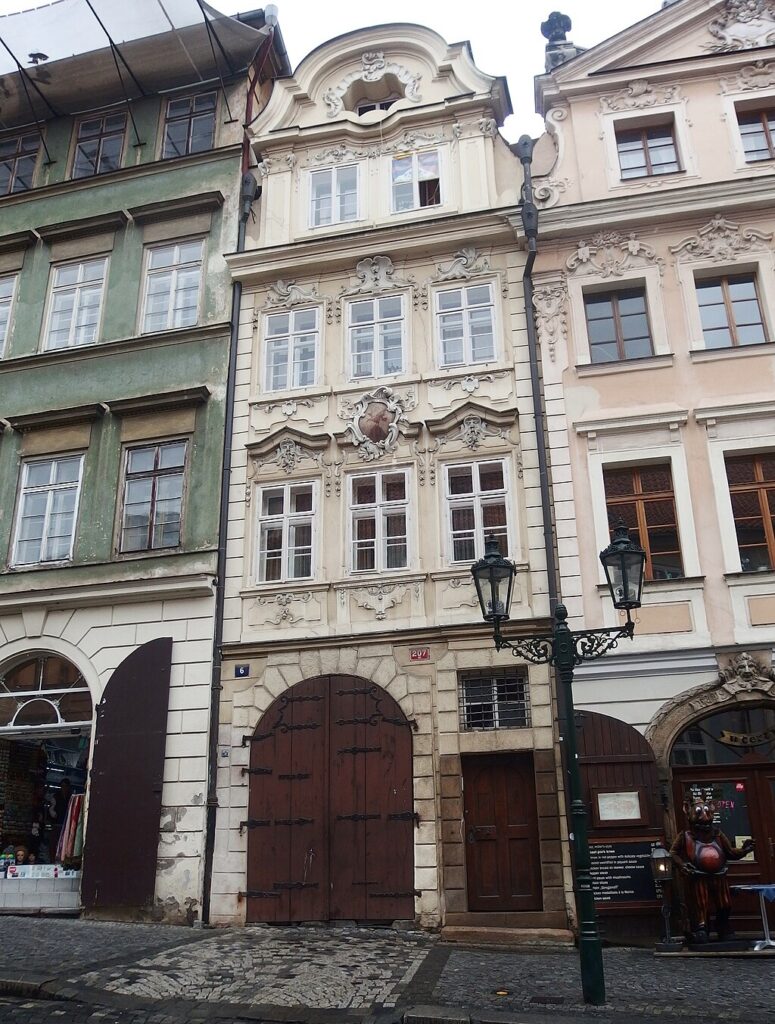
Nerudova 12, At the Three Fiddles
This gothic house At the Three Fiddles with a baroque facade was once the home of three families of famous violin makers. The most notorious violin maker who lived and worked here was T. Edlinger. Edlinger was even the founder of Prague’s violin-making school. Unsurprisingly their house symbol is three violins set against a sea of blue and golden stars.
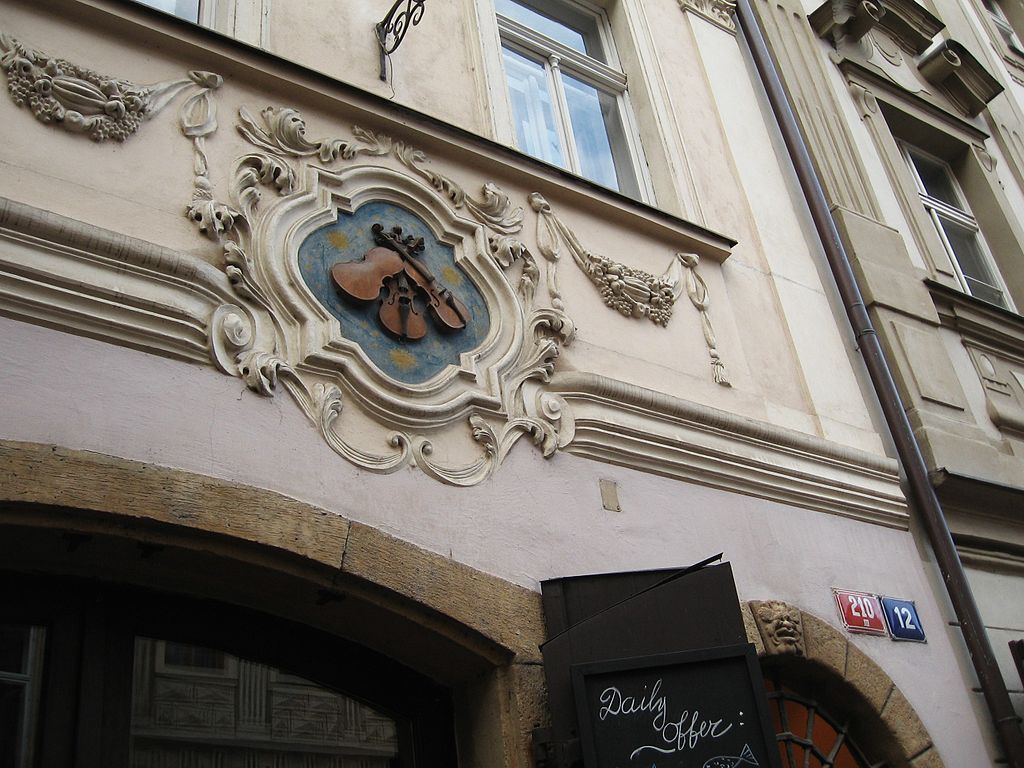
Nerudova 14, Valkounsky House
After seeing so many houses with the same symbols, it’s so exciting to discover something new! On the front of this house is a carving of the creature Medusa with a head full of golden snakes! This house was once owned by Knight Bohuchval Valkoun from Adlar from the beginning of the 17th century. Originally it was built in the 16th century, but after the great fire of 1541, it had to be torn down and reconstructed. As mentioned before, snakes are a symbol of transformation and are popular with goldsmiths. A famed goldsmith bought the house in the 18th century, and it was he who added the house symbol of Medusa. After all, the only thing that is more impressive than one golden snake is a head full of them!
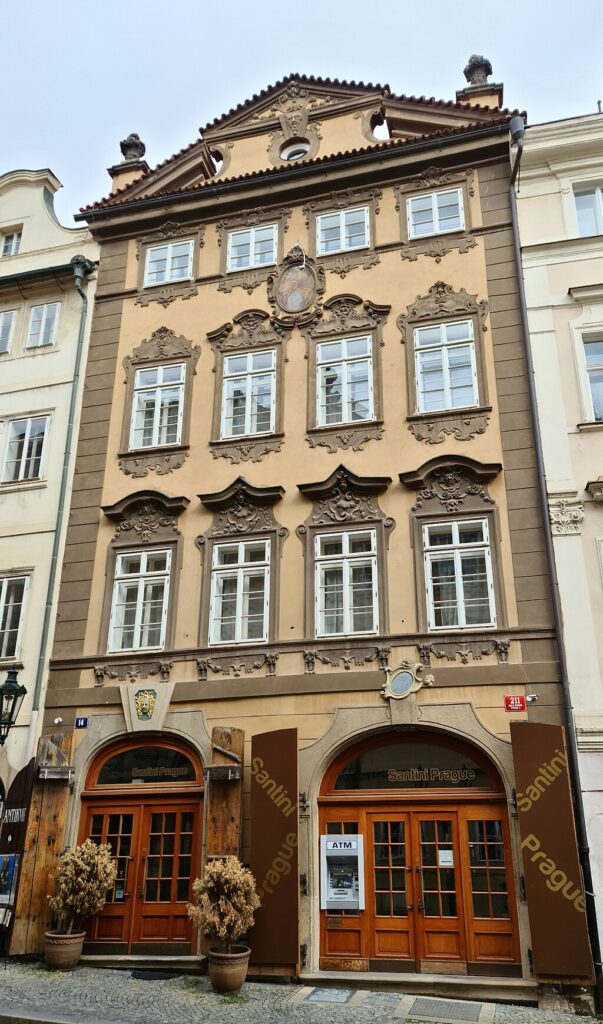
Nerudova 16, At the Golden Goblet
In 1705, the famous Italian-Czech architect Jan Blažej Santini Michel bought this house. He called it “U zlaté číše,” which translate into “At the Golden Goblet” after the Goblet which is carved onto the front of the building. Before Santini, master goldsmiths Jan Schumann lived here in 1660. The Golden Chalice is the symbol of the goldsmith’s guild. The Chalice also symbolized the Holy Grail. The holy grail was thought to be a cup that would bring the drinker eternal life and is also known as the Philosopher’s Stone. So many alchemists also use the Chalice as a symbol of their craft.
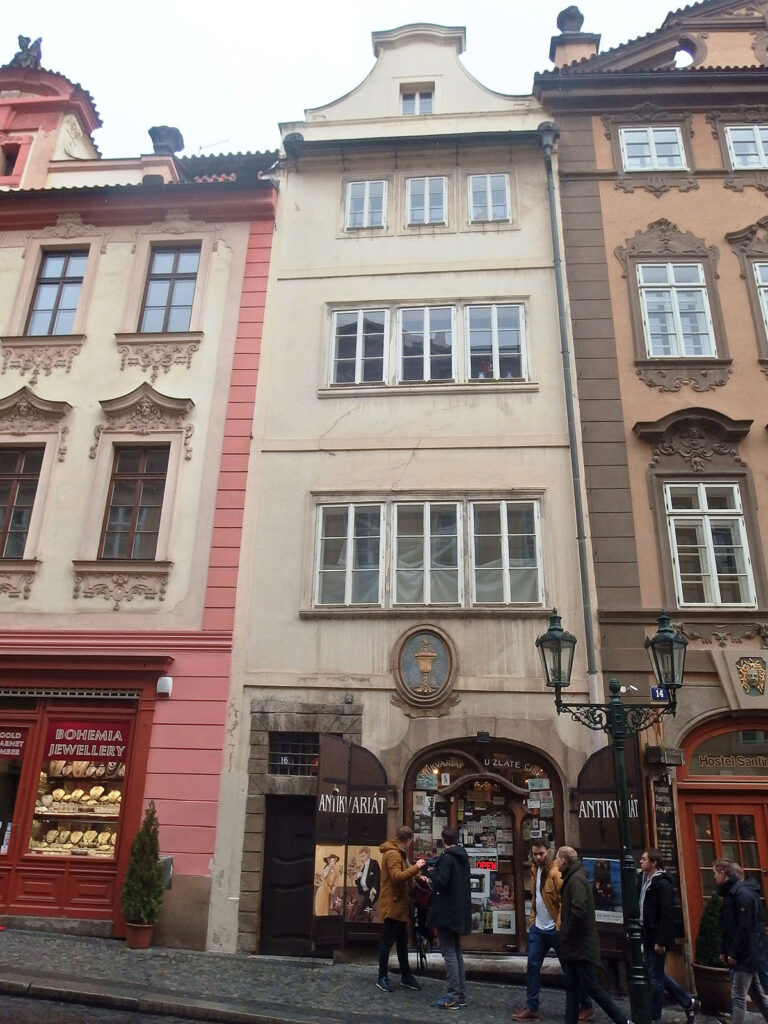
Nerudova 11, At the Red Lamb
“U Červeného Beránka” or House At the Red Lamb is a neo-baroque house built in the late 1800s. Above the doorway into the house is a large sculpture of a gentle red lamb walking atop a lush mound of green grass. Lambs symbolize innocence and are often associated with Jesus’ sacrifice (i.e., the sacrificial lamb). Red is also a colour that is frequently associated with martyrdom and the blood of Christ. Since the house is dedicated to sacrificing, it is no surprise we also find a painting of the Madonna atop the house’s facade.
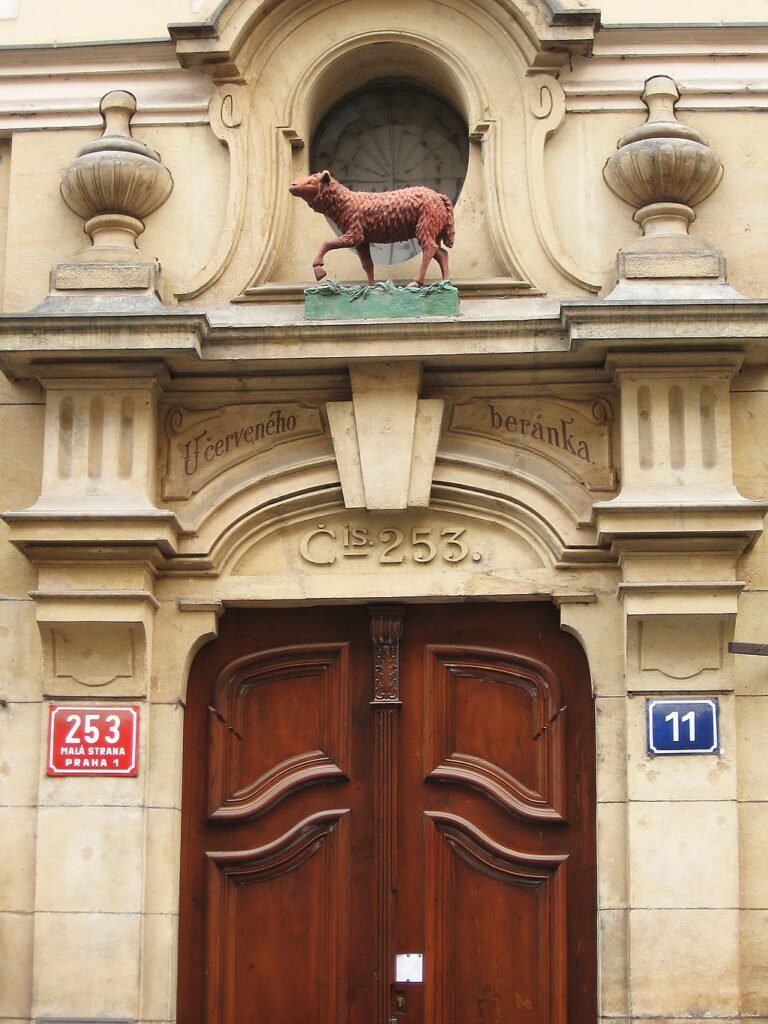
Nerudova 26, At the Golden Eagle
The house At the Golden Eagle is a Renaissance home located in the spot where the old royal moat previously ran through. The house belonged to a family of builders, the Aostalis, from 1549 onwards. These architects were responsible for several royal buildings, including the Ball Games Hall in Hradčany. Unlike the previous eagles we have seen, which have their wings spread wide, this eagle is perched with closed wings. Closed winged eagles are not a very common symbol as an eagle with closed wings symbolizes it being trussed up or bound. Perhaps this is a subtle message from the owner that he was bound up by something and not allowed to spread his wings and be free.
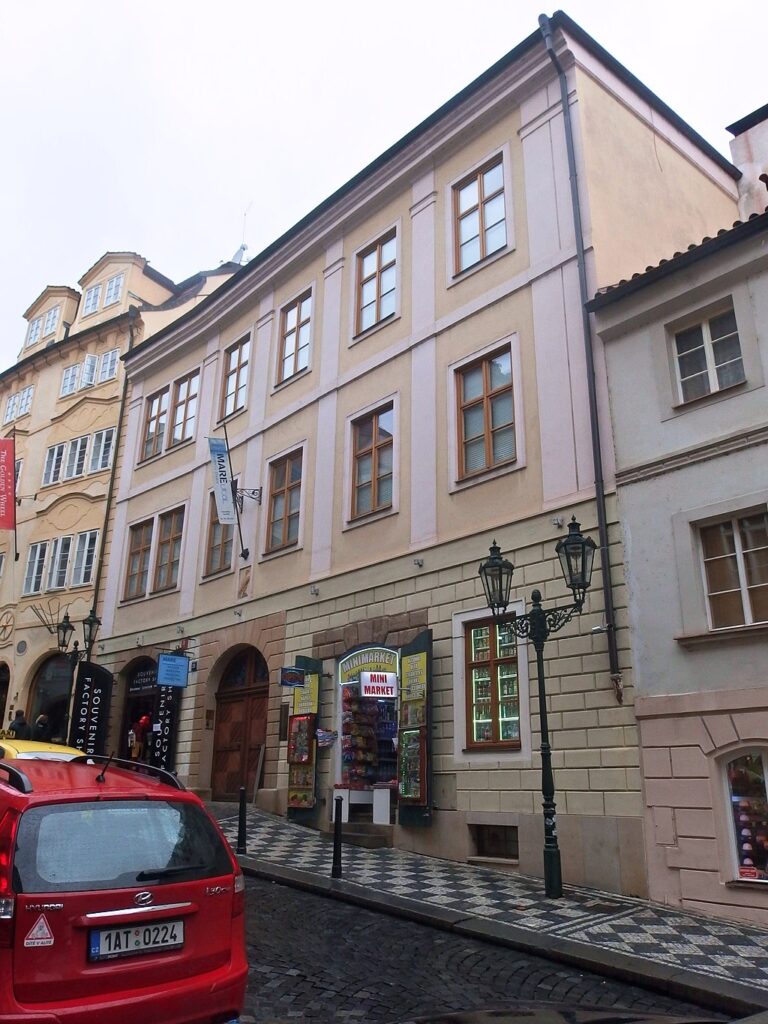
Nerudova 25, The Donkey in the Cradle
The house at #25, called the Donkey in the Cradle, is the former residence of alchemist Edward Kelley. The house is originally a gothic house but with a renaissance and baroque facade. In addition to Kelley, the house was also home to Jan Neruda and his family, who lived and owned a store here before moving up the street. Above the doorway was once a beautiful fresco of the Birth of Jesus, but it has faded badly over time. Today only the donkey and the baby cradle are visible. But the donkey has strong connections to the alchemical world, so it is no surprise that it would find itself in a prominent position on the house of the previous court alchemist.
The first historical evidence of alchemy was in Egypt, and it is said that God Isis was the first alchemist. In Egpyt, Lucius, a pompous and vain magician, was misusing his magic and accidentally turned himself into a donkey. He toiled for years as an ass and finally succumbed to asking for help by praying to Isis. Isis told him that he could only become human again if he ate a garland of roses during Isis’ holy procession. An act of great submission. He did so, and after transforming back into his human body, Lucious became one of Isis’s most loyal devotees. The story is one of humility and how dangerous alchemy can be if it is not respected.
Nerudova 27, At the Golden Key
Initially, a Renaissance house, the house At the Golden Key, portrays lovely Baroque and Classicist adaptations. The house sign is a richly decorated golden key set in a baroque cartouche that dates back to 1844. Keys are thought to represent enlightenment, and golden keys represent the power that allows someone to be worthy of entering into eternal life. As the philosophers stone was the alchemical discovery that would purportedly restore eternal life, one can only imagine if this house symbol was a clue to the Philosopher’s Stone’s secrets.

Nerudova 28, At the Golden Wheel
The house At the Golden Wheel was an old Renaissance house built where the old moat divided Hradčany and the Prague Castle. The golden wheel on the front of the house dates back to 1624, in the height of the alchemical craze! The symbol of the golden wheel represents a stage in the magnum opus, the process by which lead purportedly could be turned into gold. The wheel symbolizes time, as the cosmos and position of the earth and the sun were of the utmost importance in alchemy. Not only did all the chemical processes need to be done right, but you had to do them at the right time of year for the spells to succeed.
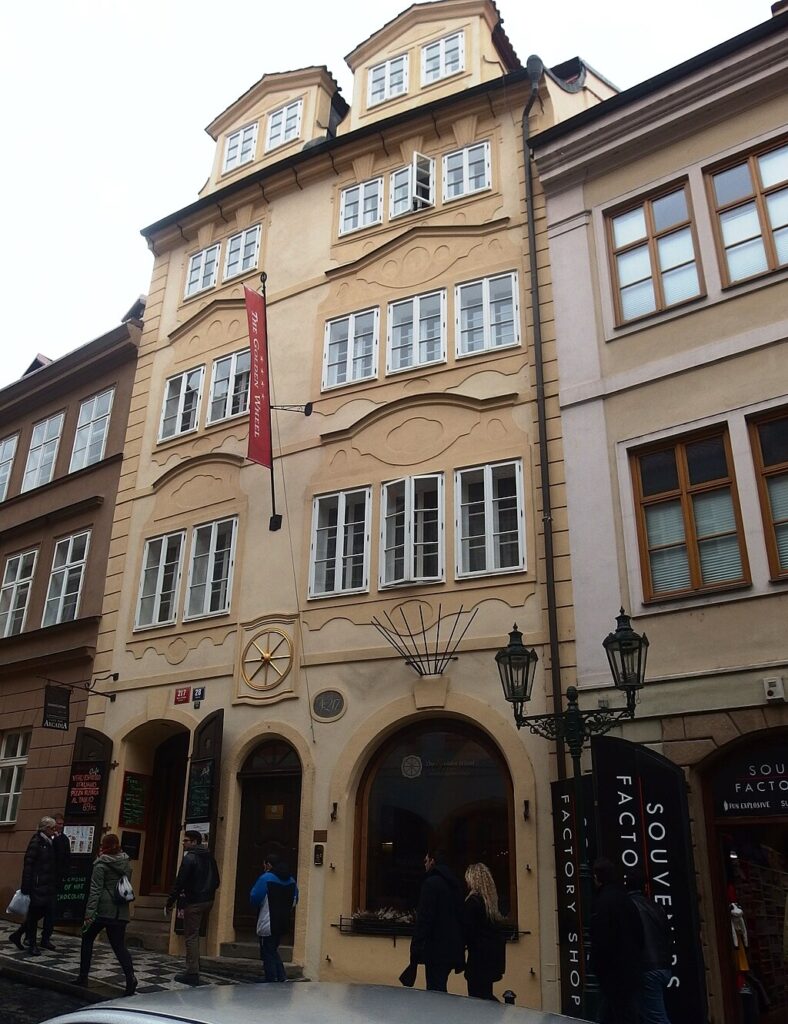
Nerudova 34, the Golden Horseshoe
The beautiful renaissance house at #34 is a stunning building. It is painted pale blue with dark blue trimmings. Above the doorway is a cartouche with the portrait of a St. Wenceslas riding a horse. Just below the cartouche is a golden horseshoe hanging off the house, giving the building the name the Golden Horseshoe. The horseshoe itself dates back to 1559. Look closely at the painting, and you’ll notice a real minature golden horseshoe sticking out from the picture. The man in the portrait is handsome and well dressed. As he trots along with his well-groomed horse, we can imagine that this sign might have been an example of early advertising for the blacksmiths who worked on Nerudova. The painting reflected the old Czech saying that “he who had his horse properly shod arrived safely.”

Nerudova 33, Bretfeld Palace
The Bretfeld Palace was originally an old baroque burgher house. The house was owned by Josef of Bretfeld, who was an avid collector and worldly host. He acquired a vast collection of books and paintings to entice people to visit his grand palace, where he held lavish parties and concerts. The court saw guests such as Wolfgang Amadeus Mozart and Giacomo Casanova. To spot the palace, look out for the mint and moss green coloured building with beautiful stucco reliefs on the facade. At the very top of the facade is the house symbol, a relief of St. Nicholas. St. Nicolas is the patron saint of sailors and pawnbrokers. I can imagine it was the pawnbrokers which Bretfeld was partial to as he would frequent their establishments to acquire so many of his treasures.
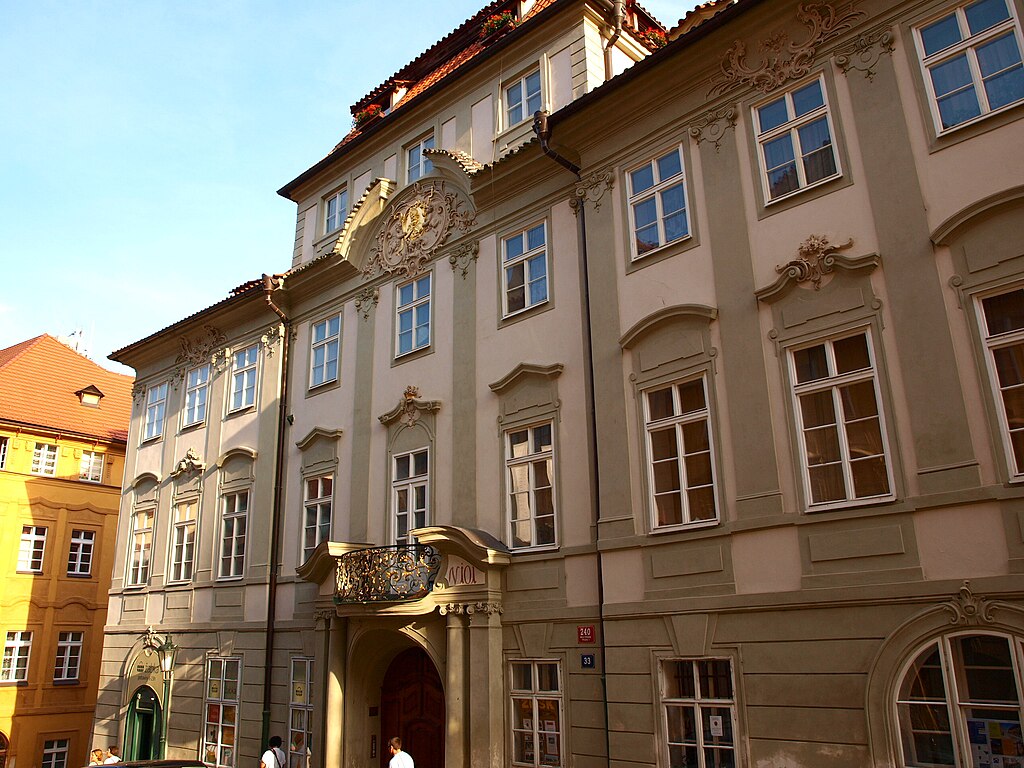
Nerudova 41, At the Red Lion
At house #41, a painting with a beautiful red lion is set against the red and white baroque facade, which marks the house At the Red Lion. Although the facade was made in 1726, the origins of the house date back to 1608, the date marked in the portal above the entryway. The relief depicts a great red lion rearing up on his hind legs, holding a golden chalice in his hand. The Chalice is thought to contain the elixir of life. The colour red in alchemy indicates the red matter left on the alchemical pot’s bottom after the sublimation step. Sublimation is the third step in creating the philosopher’s stone.
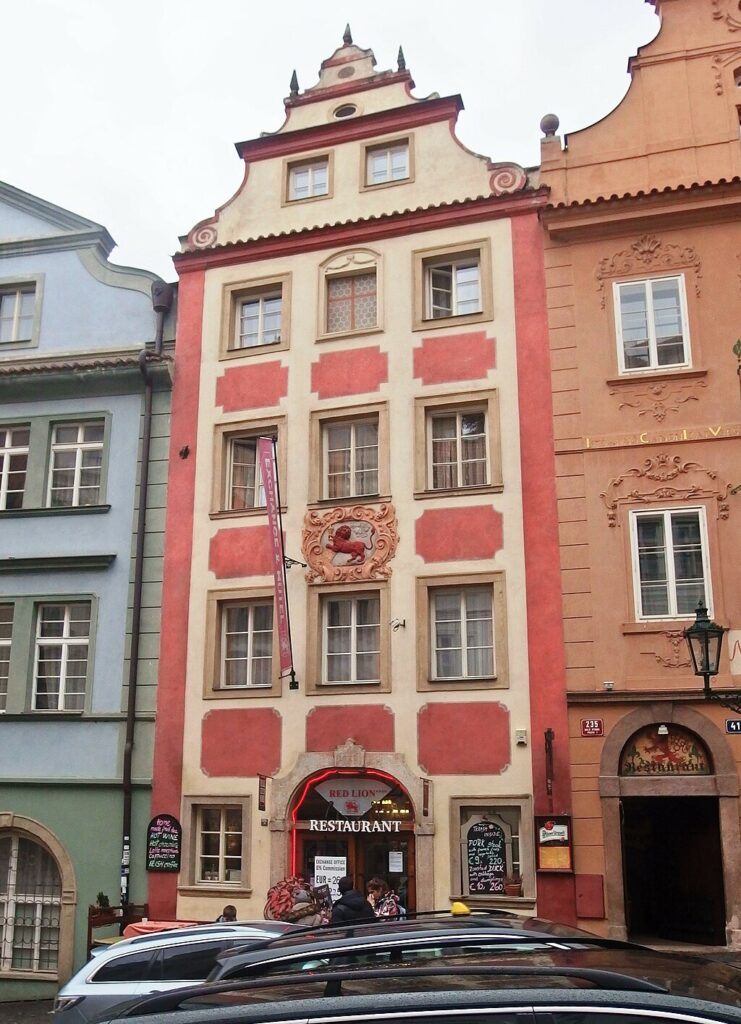
Neurdova 43, At the Green Lobster
One of my favourite house signs, a cheery green lobster, can be found here at #43, the Green Lobster house. Not only is the lobster a very different and surprising creature to see, but I also love the fact it is painted green. It really makes it stand out after seeing so many house signs painted red or gold. The lobster is a symbol of transformation, as crustations shed their skin to grow. Lobsters are a symbol of emotional growth, as we must leave things behind to grow ourselves.
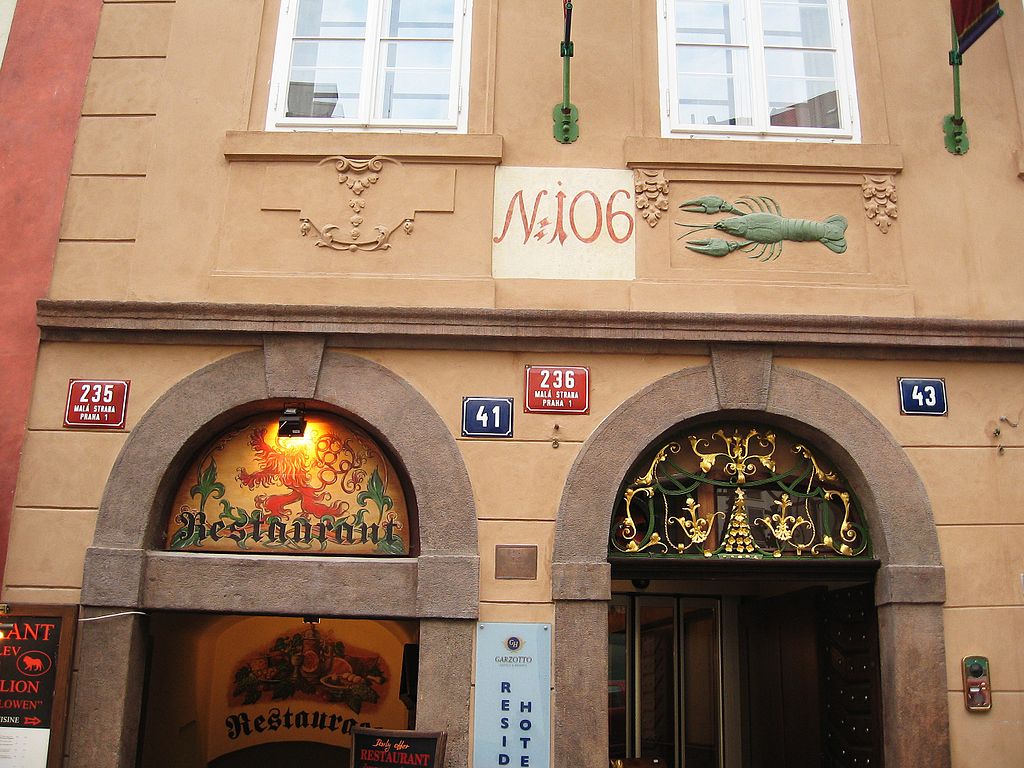
Nerudova 47, the House of Two Suns
The Czech poet Jan Neruda spent much of his life on this street, living inside the house at #47, called the house At the Two Suns. Neruda’s father owned a tobacco shop here from 1845 to 1857. The house was built in the Renaissance but now bears a beautiful pale yellow with stuccos decorative baroque facade. The renaissance portal has still been preserved along with the house sign from the same period.
The house is named after the relief of the two suns, which are located above the doorway. The suns are painted in gold, and each has a human face carved upon them. The faces look in opposite directions, keeping an eye on the street outside. Below them are the letters “IHS,” which is Jesus’ monogram. Just below the insignia is a flaming heart. In alchemy, the sun represents perfection. Alchemists strived to turn iron into gold. They were obsessed with gold as they felt it was a means of recreating the sun’s brilliance here on earth.
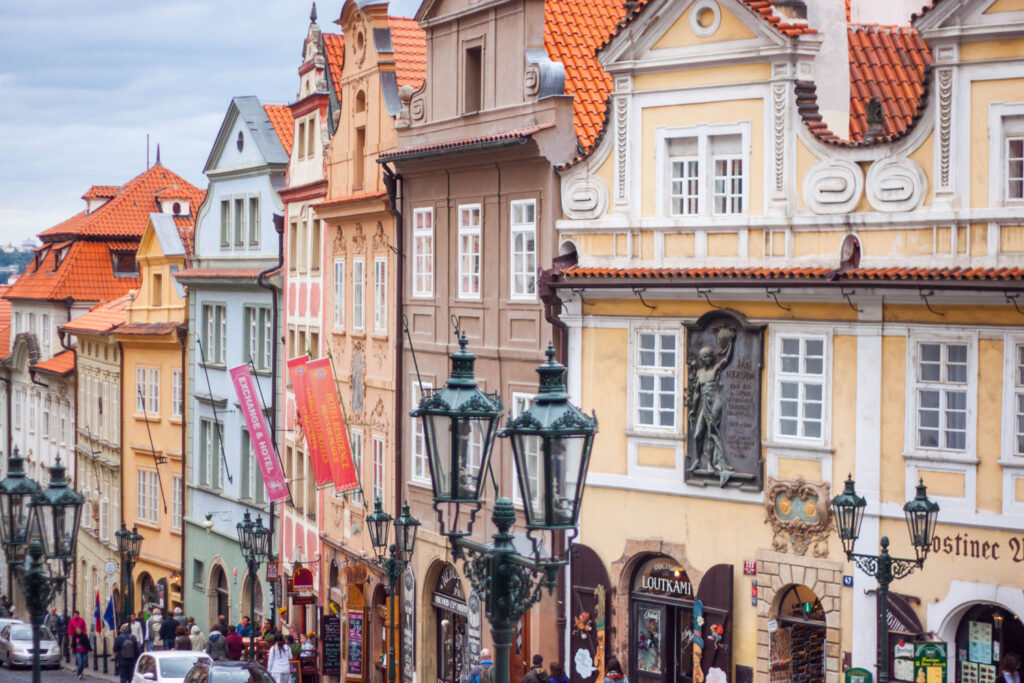
Nerudova 49, At the White swan
At number 49, we find the gothic house At the White Swan. Although the building’s exterior was renovated in the baroque era, the white swan’s stucco relief dates back to 1608. Swans are perhaps one of the most prevalent symbols of purity. In alchemy, black and white represent good and evil, or sinful and pure. The alchemist’s journey of transforming raw, dark material into its pure white form is like the sinner’s journey of corruption to piety. With the latter stage being represented by the beautiful white Swan.
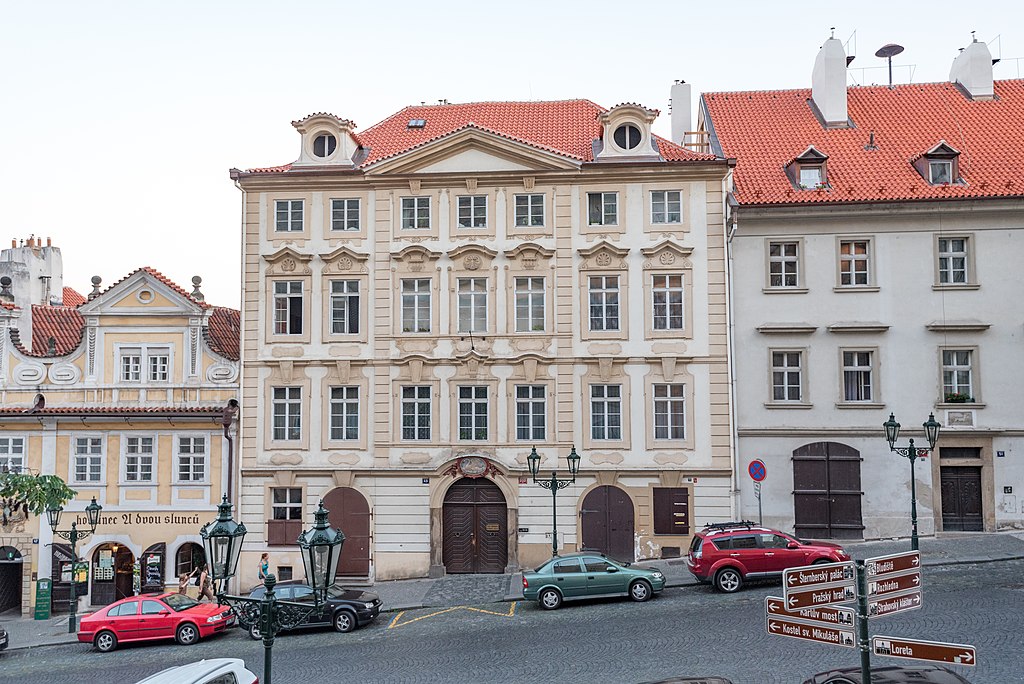
Nerudova 51, the Little Green Stag
The house at #51 Nerudova has a simple jumping stag carved onto the front of the house. Although it is known as the Little Green Stag, the green colour has long since faded off the facade. ‘U Zeleného jelínka’ was a medieval house which was rebuilt in 1819. Although the building doesn’t have the same flash as the rest of the places on the street, it hides within its walls some of the most important structural elements from the medieval period in Prague.
In alchemy, the final tincture in transforming base metals into gold was often symbolized as a stag. Stags represent masculinity, and unicorns represent femininity. When they meet in the forest, their unity is thought to represent the soul’s final transformation process, aka the last step in creating the philosopher’s stone.
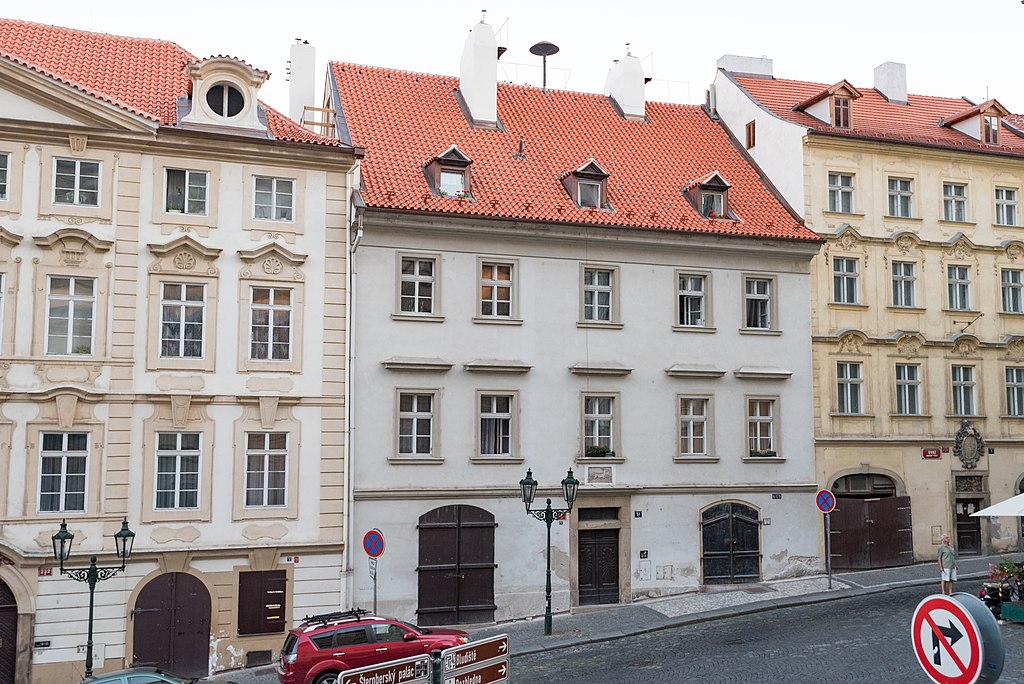
Úvoz
As we continue along Nerudova street, it swiftly changes into Úvoz street as we start up the hillside’s steeper part. The name ‘Úvoz’ is a modern name for the road, which comes from 1870. Before this street was called Hluboká, and before that, it was known as Strahovská cesta. ‘Úvoz’ translates into ‘Ravine‘ as this part of the street used to be a ravine cut through Lesser Quarter. You’ll find some of the most historic houses and signs along the road as this part of the city was spared from some of the fires that broke out in the rest of Prague.
Úvoz 4, At the Three Red Roses
The incredible house At the Three Red Roses at the start of Úvoz street was a baroque home from the 17th century. Giving the place its name is the large fresco of the Madonna on the front of the house. The fresco is framed in a beautifully carved stucco decoration with three red roses on the bottom. The rose is an essential symbol of the Virgin Mary as one of her holy titles is the Mystic Rose. If you look closely, you’ll notice these roses have no thorns as Mary is often called the “rose without thorns.” Many people believe that roses grew in the garden of Eden but without thorns. Only when Adam and Eve sinned did the roses grow thorns. And yet Mary, who is the most honourable symbol of purity, is still a rose without sin.
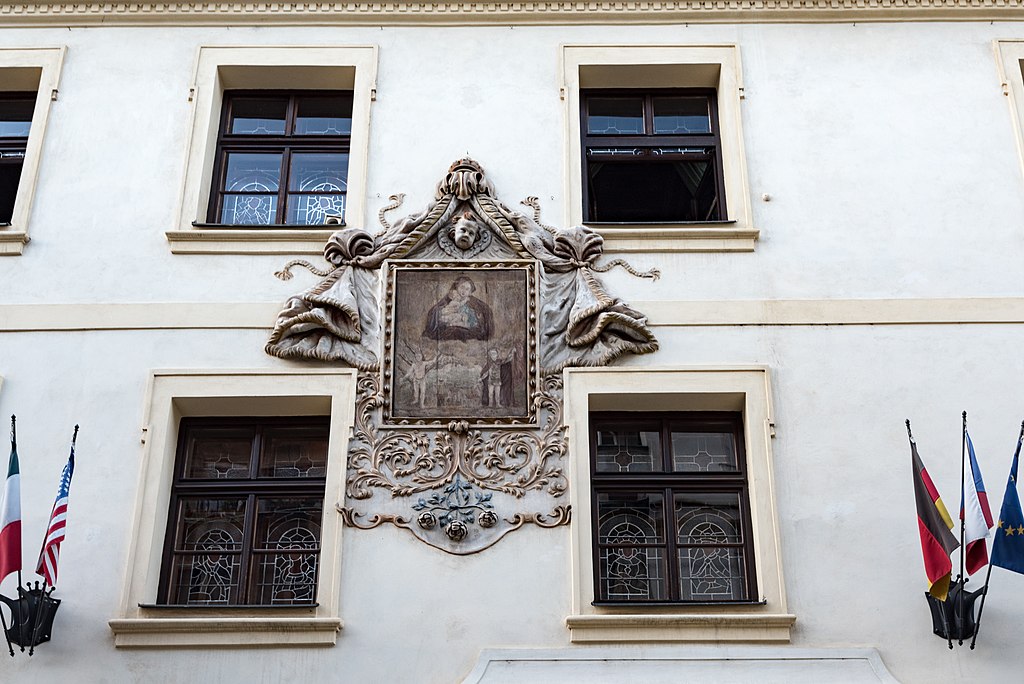
Úvoz 6, At the Three Axes
‘U tři seker’ or House At the Three Axes has one of the few original house signs in Prague. The baroque house is covered in wonderfully detailed stucco decorations. In the central cartouche on the front is the house symbol, which has the small axes interwoven. Traditionally axes were a symbol of the carpentry guild as the house was once the court carpenter’s residence. Today the house is occupied by a fantastic cafe.
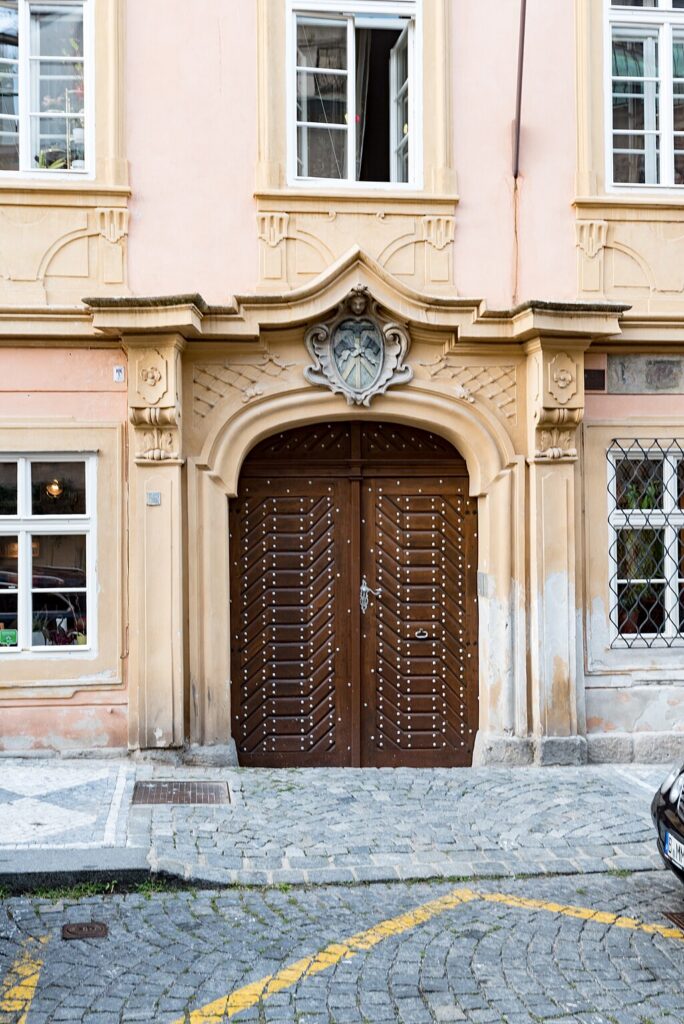
Úvoz 14, At the Three Red Hearts
The theme of threes continues along the street at house #14, At the Three Red Hearts. This Renaissance townhouse with Baroque and Classical facade has another one of the oldest preserved house signs. The three hearts positioned to make the shape of a triangle has both a secular and spiritual meaning. The spiritual number of three represents the holy trinity; the father, son and holy ghost. The hearts are set against a backdrop that resembles fire, turning the icon into an image of the sacred heart, which burns with divine light. The secular meaning of the three hearts represents indecisive affection, like a love triangle.
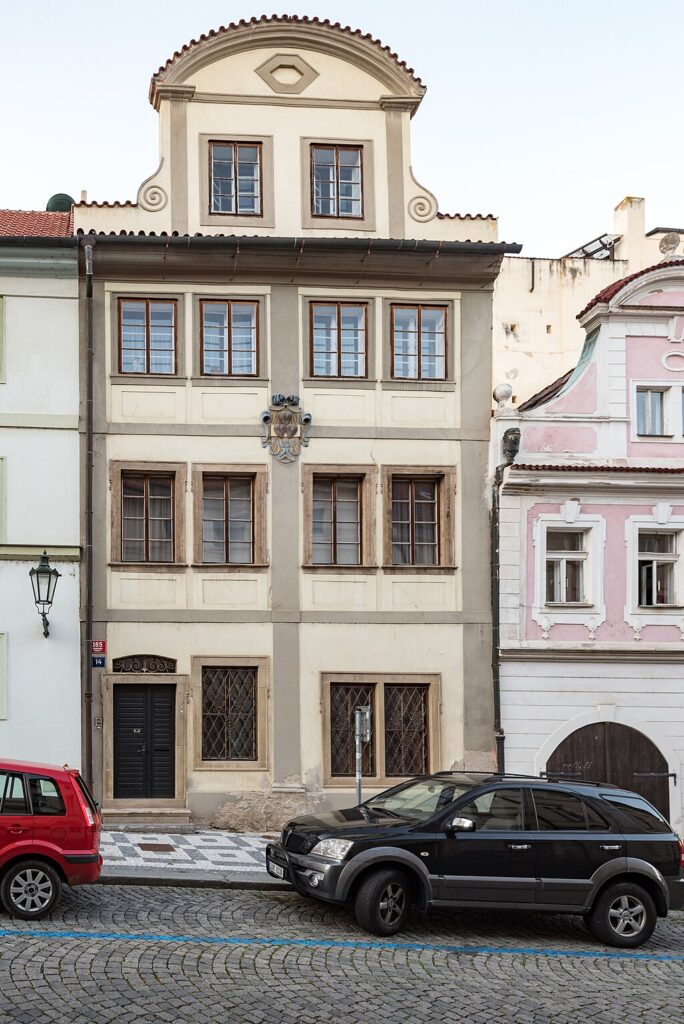
Úvoz 22, At the House of the Mirror
At the House of the Mirror at #22 on the street has a spectacular carving above the portal into the home. The baroque facade was built in 1730 and featured a stunning relief of a Madonna holding her baby Jesus. She is surrounded by a beautiful stucco frame covered in gold fillagree. You might be looking for a mirror on the building, seeing as it is in the name, but you won’t find any. Instead, the mirror is more symbolic. The little baby Jesus is holding in his hand the ‘Scales of Justice.’ This symbolizes that you are meant to see yourself through God’s eyes, like a mirror but live your life by the standards of Jesus.
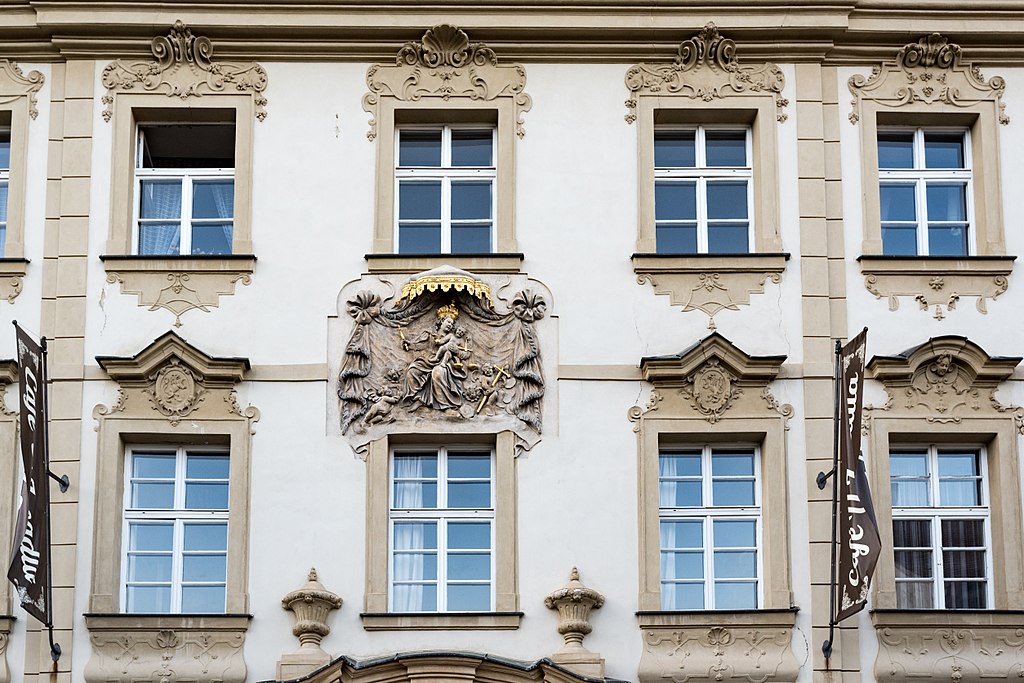
Úvoz 24, At the Stone Column
This old renaissance house At the Stone Column has a bizarre addition, which gives it its name. In 1697 the house was owned by Czech painter Kristián Luna. Stuck on the side of the house, complete out of place and not incorporated into the structure at all, is a giant stone column with a small statuette of the Virgin Mary on the top of the column. Despite being called “stone,” the column is actually made of stucco with a wooden frame. The column was added to the house in 1706 and is a copy of the Marian column, located in the old town square (although the original was destroyed in 1918).
On either corner of the house are two stone busts. One depicts a woman with the word “luna” or moon underneath. The other is a man with the word “sol” or the sun underneath. Both of the busts face either direction. They are perfectly positioned so that the other is always in shadow when one is in the sunlight.
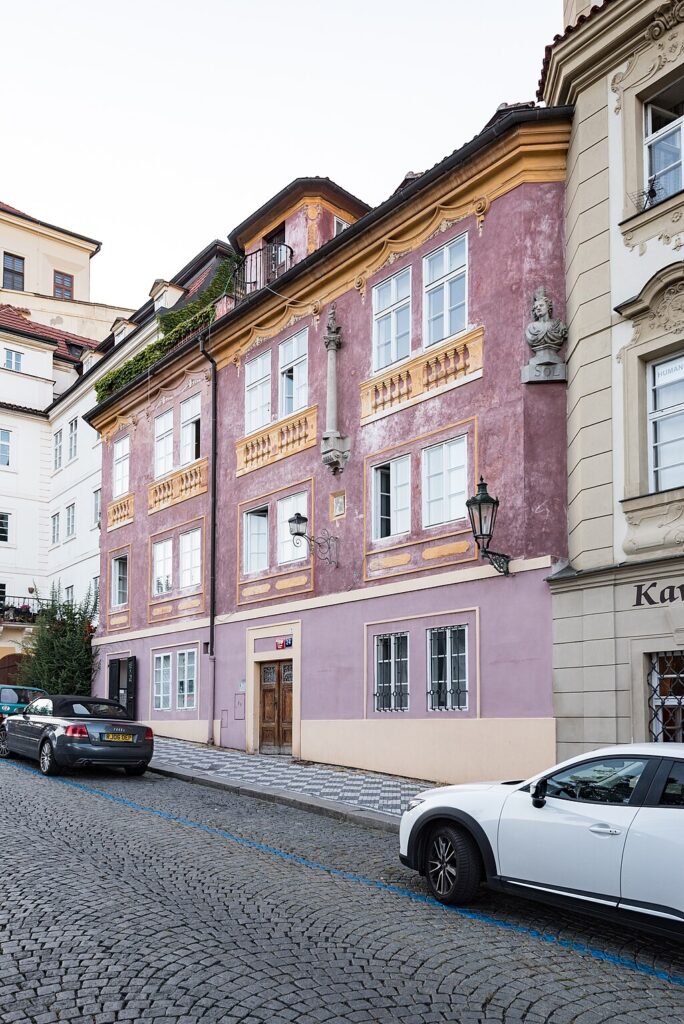
Vlašská Street
Vlašská Street is home to various large royal palaces. The area was settled in the 13th century, but it wasn’t until the 16th century when the district began to flourish. A series of wealthy Italians moved into the area and bought up several large land plots for their grand palaces. Soon enough, it was one of the most sought after neighbourhoods in Mala Strana.
Vlašská 26, At the Black Elephant
Dům U Černého slona or House at the Black Elephant is one of the oldest homes on the street, dating back to the 13th-century. The house sign on the front of the medieval facade is beautiful. In the middle ages, elephants were known to imbue moral messages of kindness and devotion. They are also commonly associated with wisdom. Clearly, whoever lived here wanted everyone to know how wise he was. And what a treat it would have been for residents of the street to gaze upon such an exotic creature as they were on their way to the market or just off on a stroll.
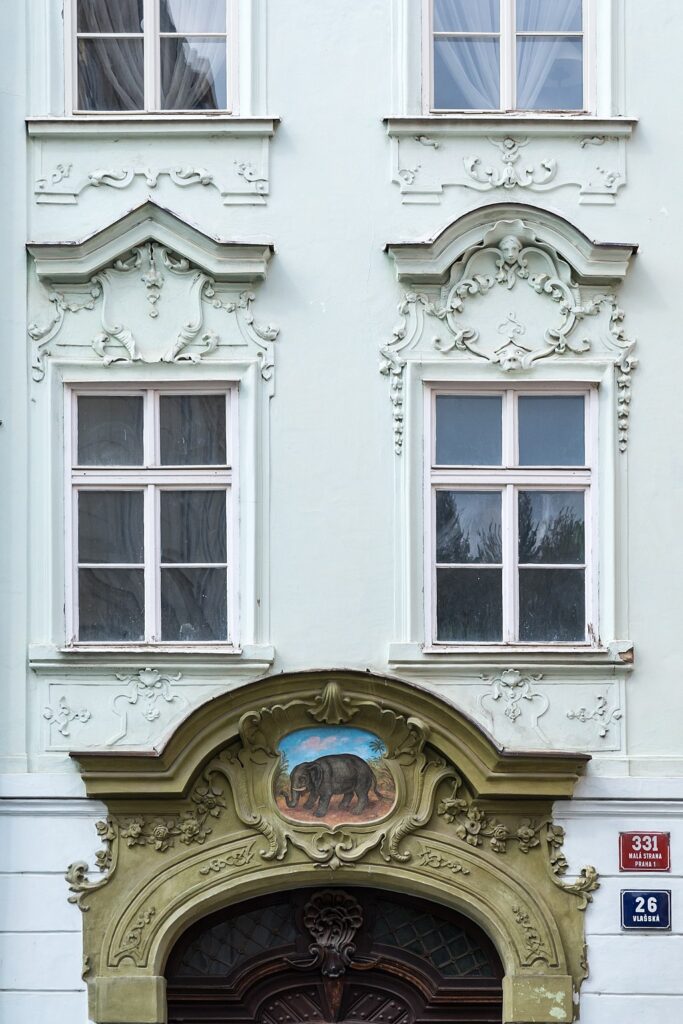
Vlašská 24/330, At the Three White Crosses
The build on the corner of the street is a renaissance house with a Classicist 19th-century reconstruction. You can find the house sign between the 1st and 2nd floor, which gives it the name At the Three White Crosses. The symbolism of three crosses symbolizes Calvary. The highest cross in the group represents Jesus’ crucifixion. The other two on either side represent the two thieves that were hung alongside him. Calvary is often used to denote an experience of usually intense mental suffering.
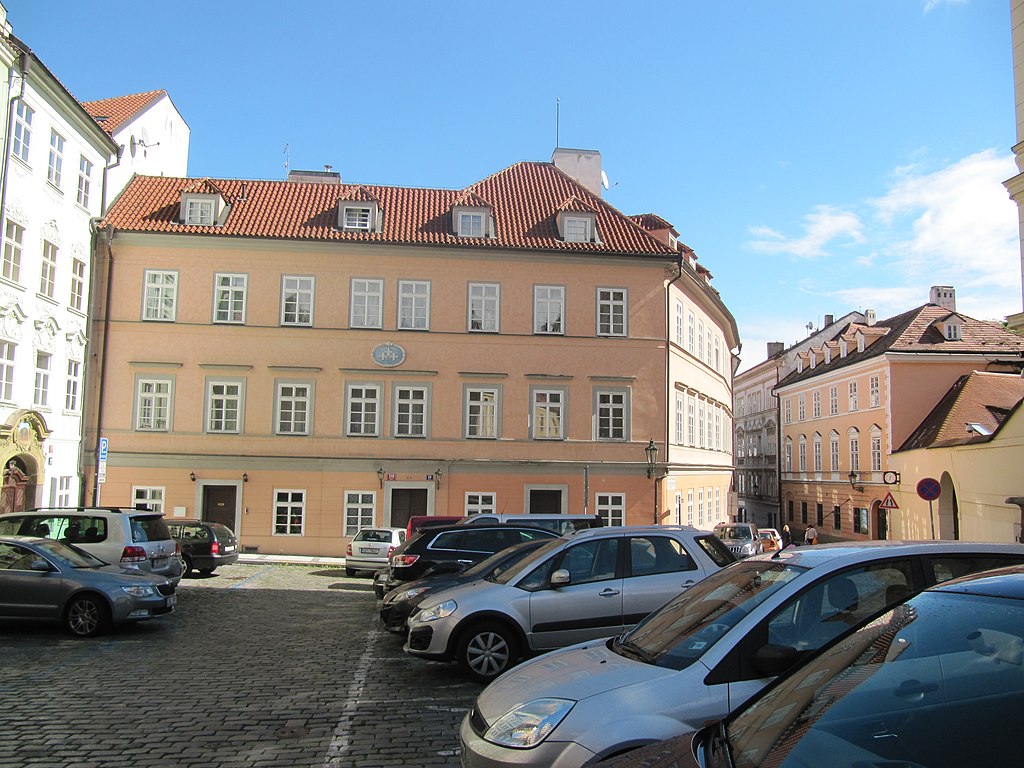
Vlašska 9/355, At the Three Red Roses
Down a small lane just off Vlasska street is the yellow facade of the house At the Three Red Roses. The house was built in 1612 when it was purchased by the Italian stonemason and sculptor Antonio Brocco. Brocco was responsible for the creation of the Singing Fountain in Queen Anne’s Summer Palace. In Greek and Roman mythology, roses are often linked to Aphrodite, the Goddess of Love.
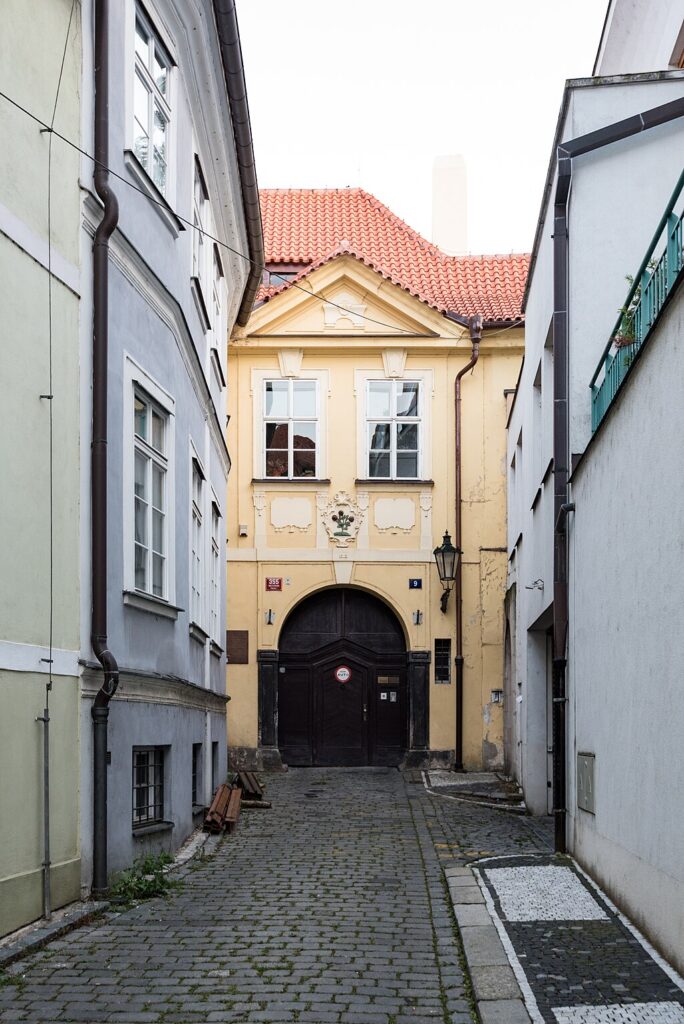
Vlašská 2, At the Golden Scales
“U zlaté váhy” or the House of the Golden Scales dates back to the 16th century. The symbol of the house is located above the green doorway. While a symbol for justice might seem out of place at an ordinary residence, a tawdry tale goes along with this symbol. Legend has it that a beautiful young woman was engaged to be wed to one of the wealthy Italians who lived on the lane. He had a bad reputation for cheating on her and would frequently go away on long trips where he could have his dalliances. He never returned after one such trip, but the poor girl waited for him for years until age turned her into an old and undesirable woman.
When her fiance finally returned, she found he had forgotten all about her. Enraged, the now old woman killed her lover. She returned home and placed the golden scales on her door before killing herself. The scales acted as a kind of suicide note indicating that she felt his death was the just punishment for his crimes and her own death the punishment for her actions as well.
Břetislavova 8/305, At the Golden Axe
At the end of Vlasska street, turn up the street parallel called Břetislavova. At #8 we find the House at the Golden Axe. The house sign on the front of the facade depicts a great double-headed eagle. The eagle is crowned with a golden crown and holds its wings around an orb and sceptre. The original house here was built in 1596 but purchased in 1685 by court painter Christian Schröder. Schröder became an inspector of the royal picture gallery in Prague and, at the same time, an imperial and royal painter. The symbol of the double-headed eagle represents the monarchy, a form of government in which the king and the queen have power over everything.
Břetislavova 307/10, Krejčovská hospoda
This old renaissance townhouse was purchased in 1615 by the Masters of the Tailor’s guild. The terra-cotta baroque exterior dates back to 1723. In the center of the portal into the house is a stucco cartouche with a painting of the Coronation of the Virgin Mary.
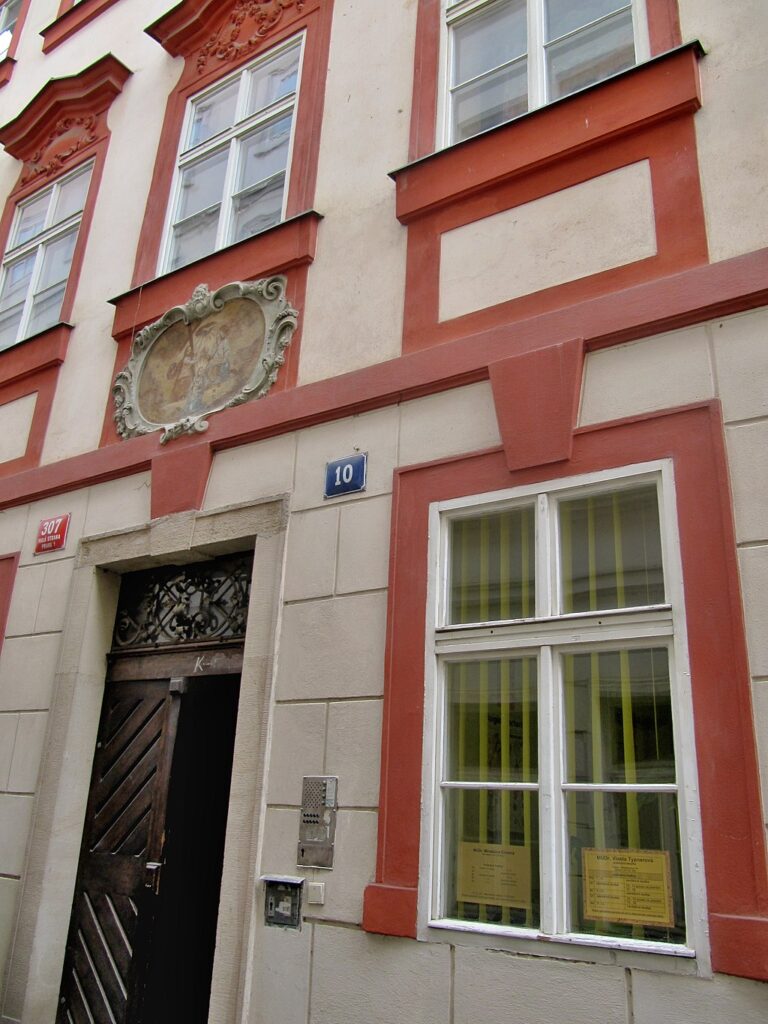
This brings us to the end of the tour in Mala Strana. If you didn’t take the tour in the Old Town you can head back across the Vlatava River to the eastern side of town. Feel free to end the tour here and continue to explore the wonders of the Mala Strana and continue the second part of the tour another day! Let me know in the comment what your favourite house sign was or what your house sign would be if you were to have one.
Happy Travels, Adventurers!
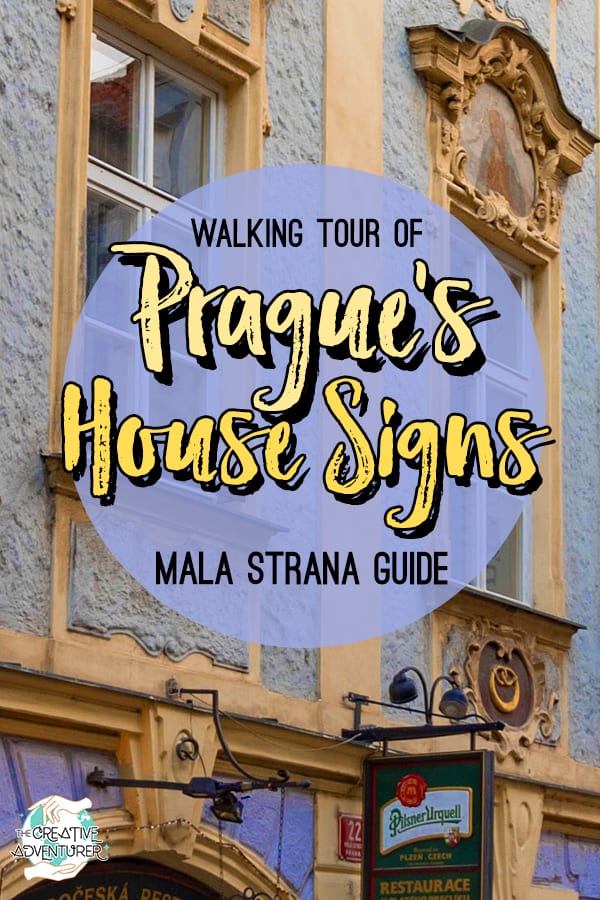
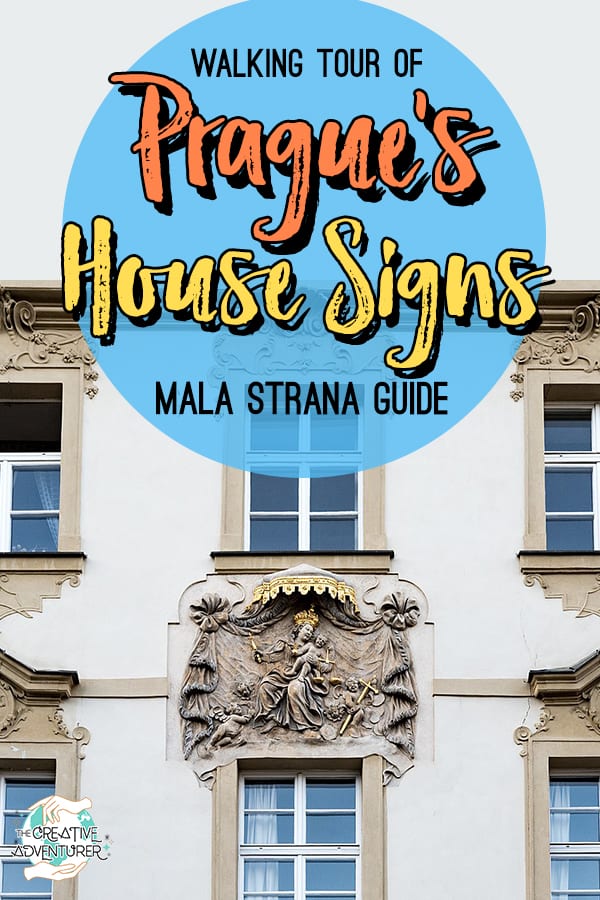
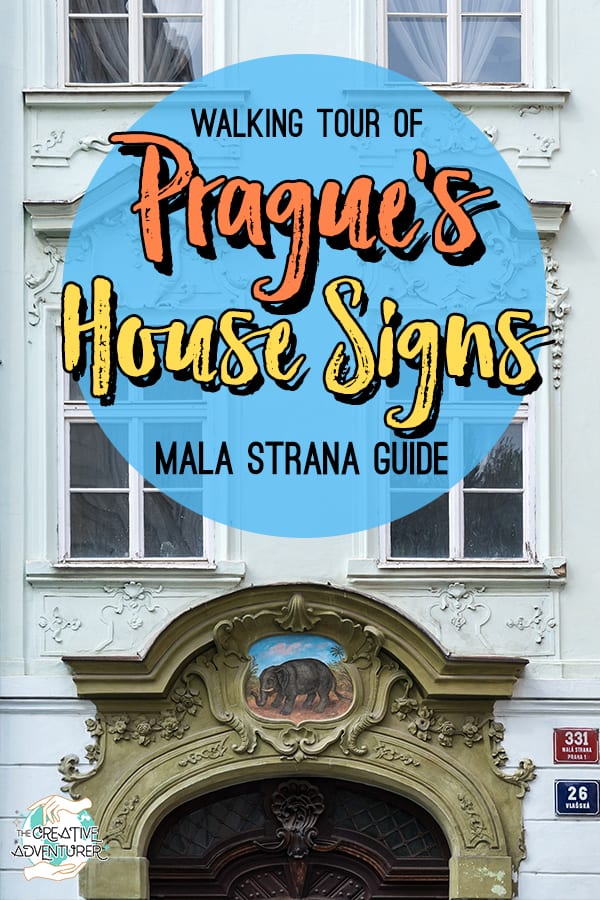
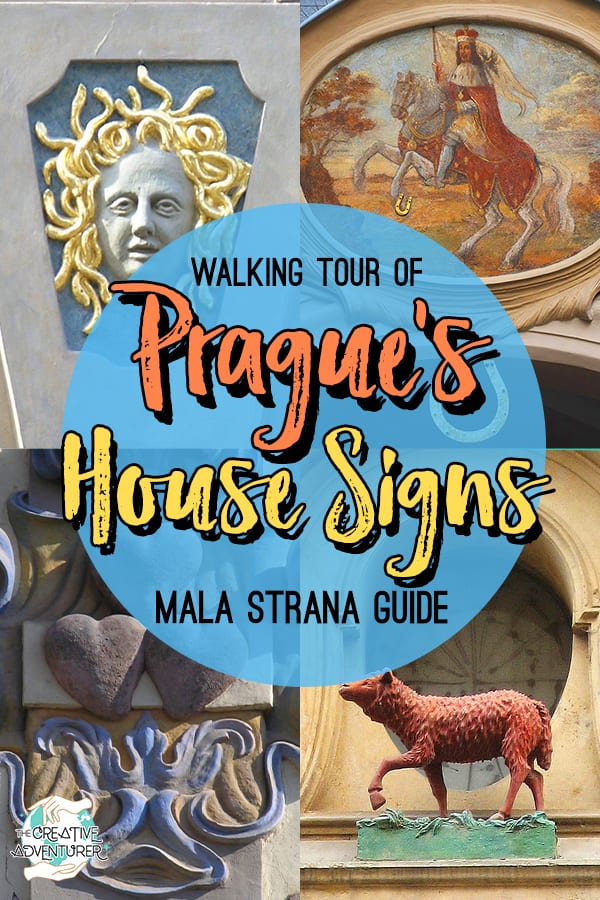
Resources:
Pamatkovykatalog | Kralovskacesta | Wiki Commons (imagery)


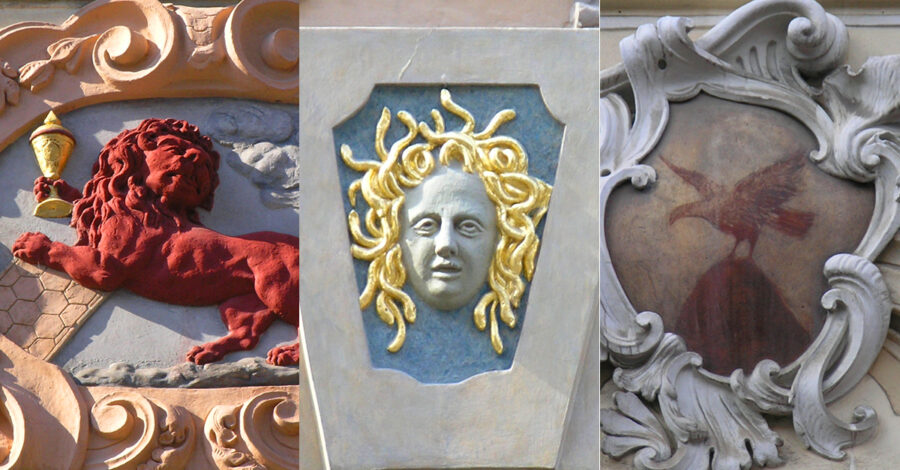

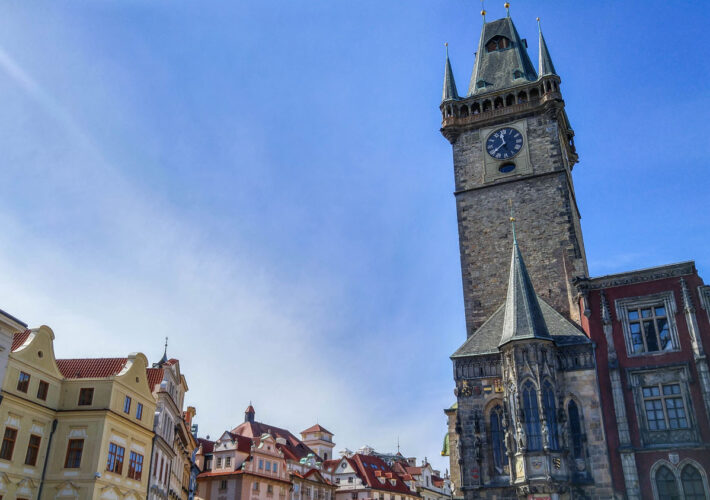
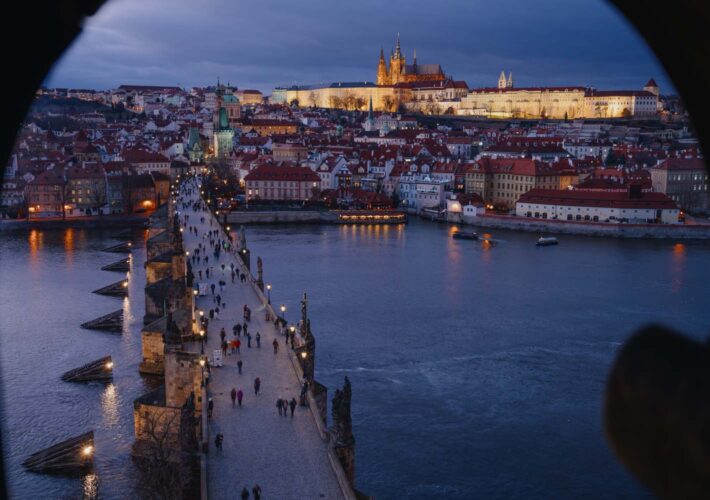
Leave a Comment